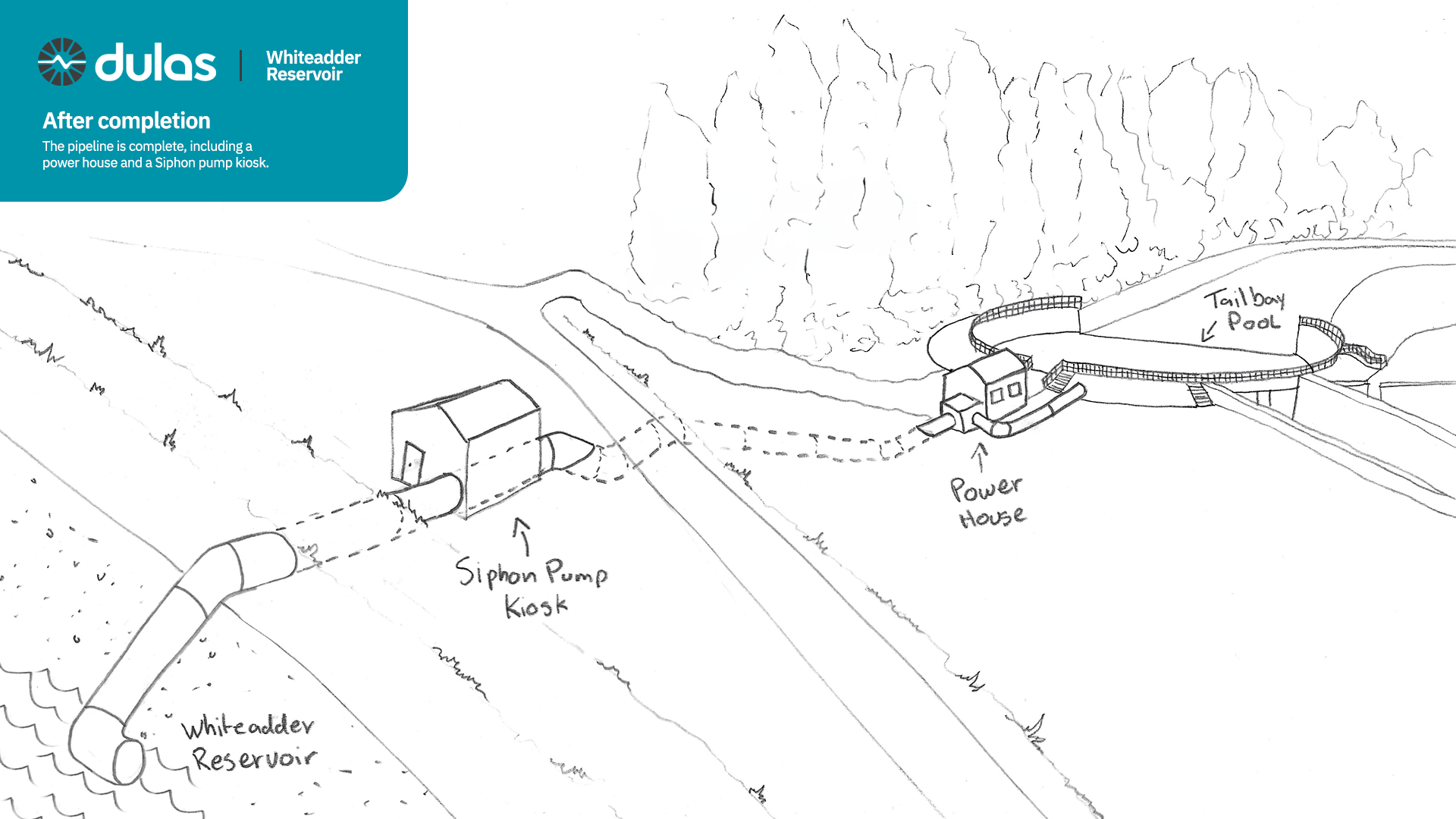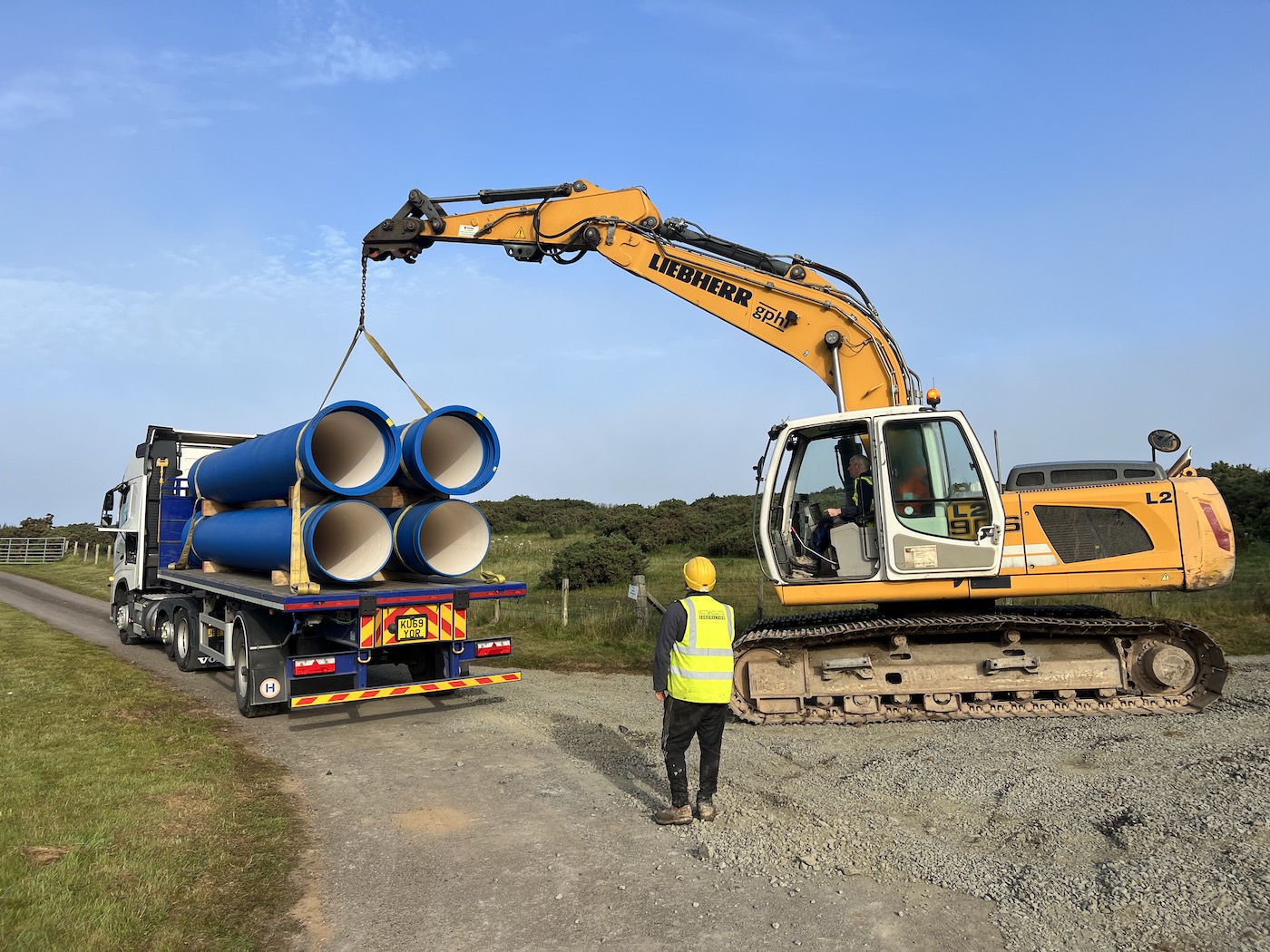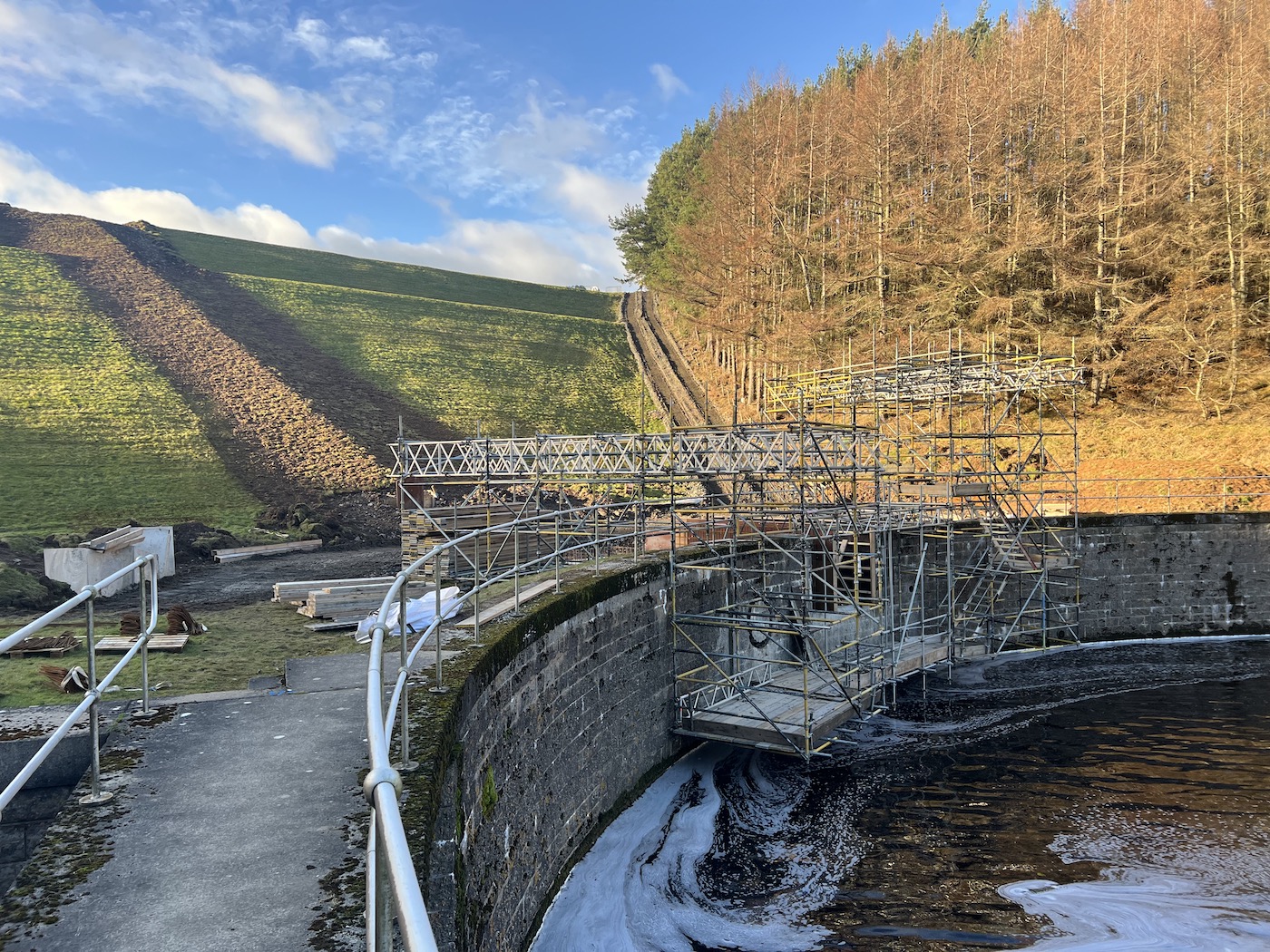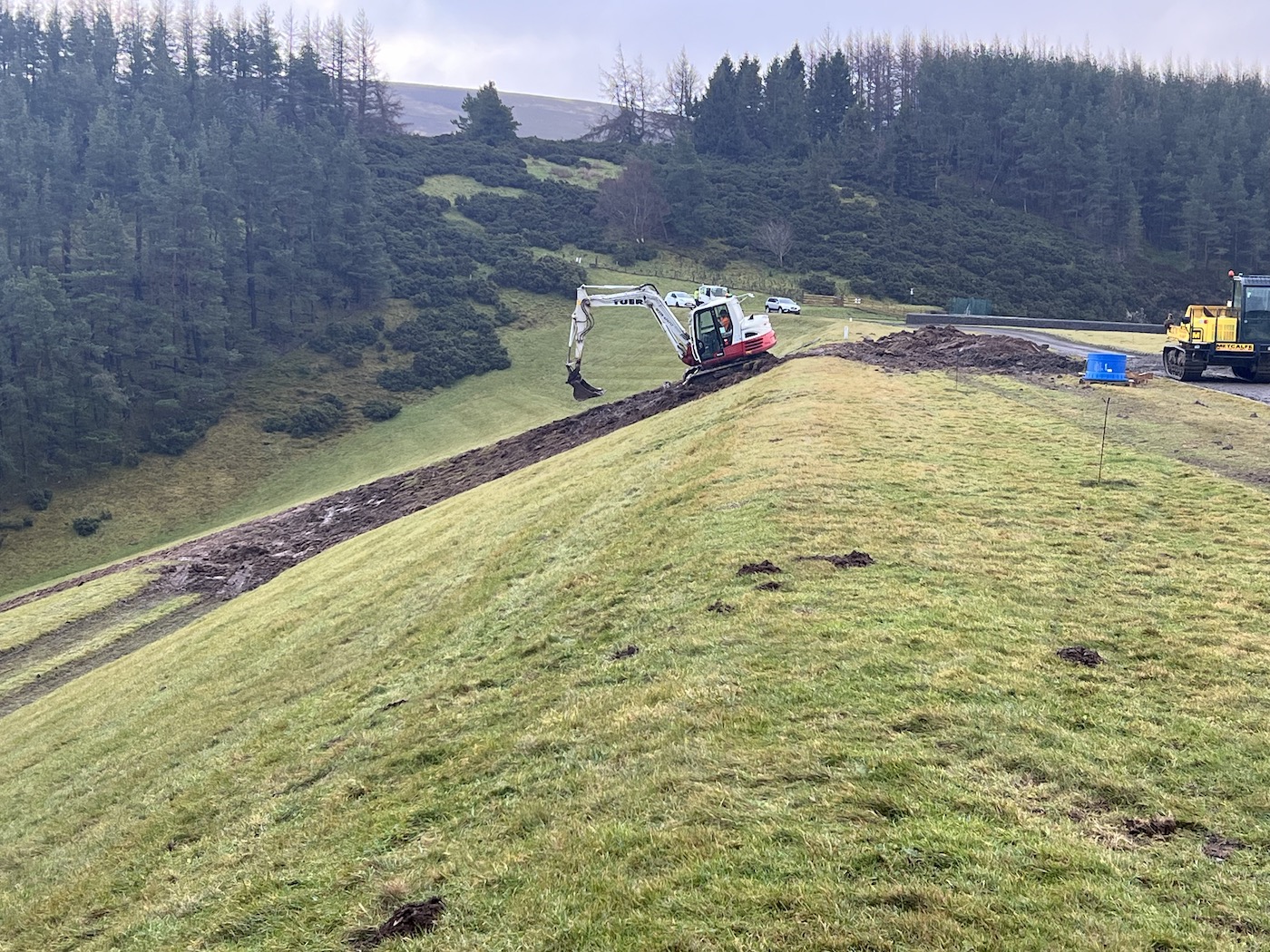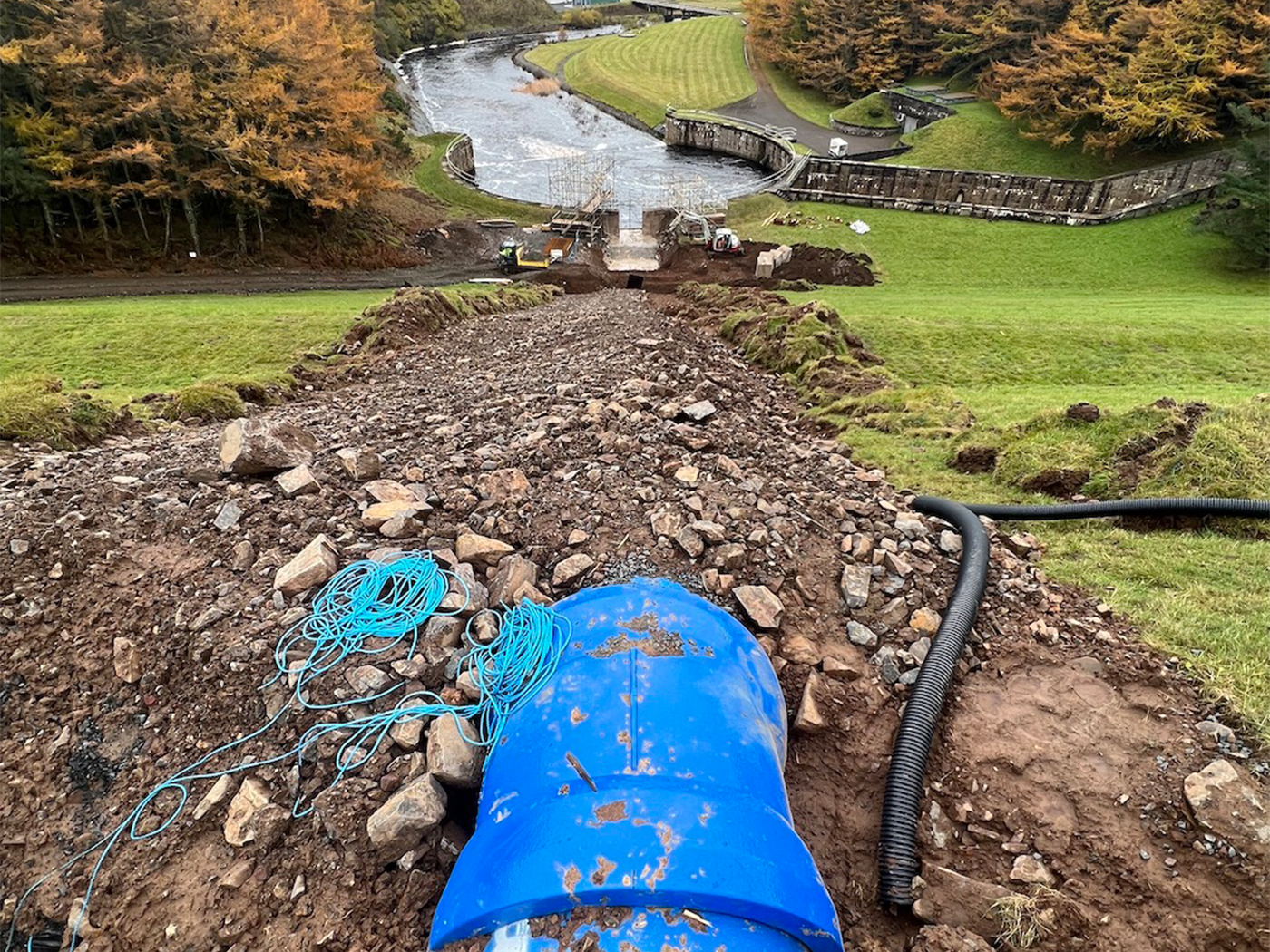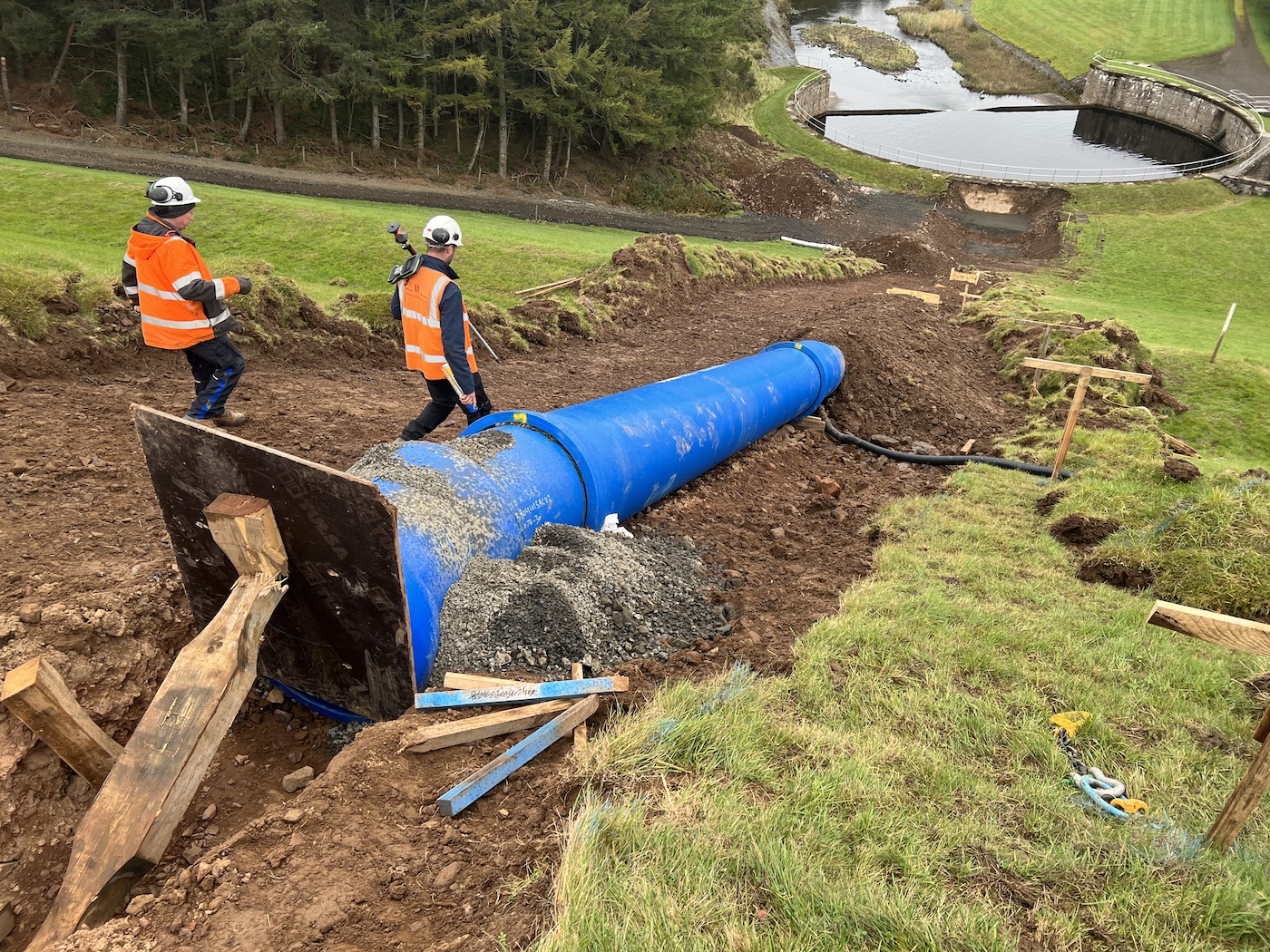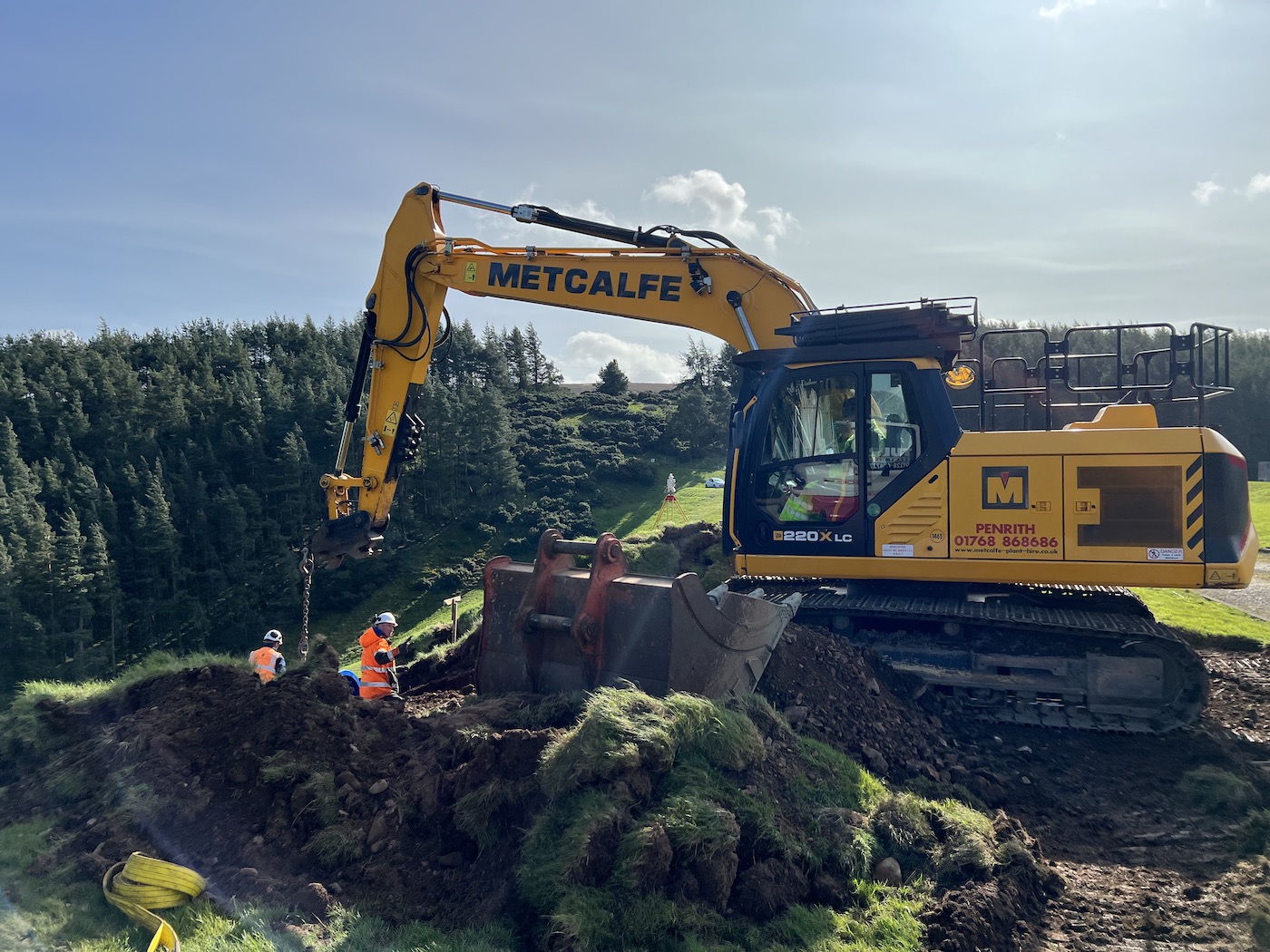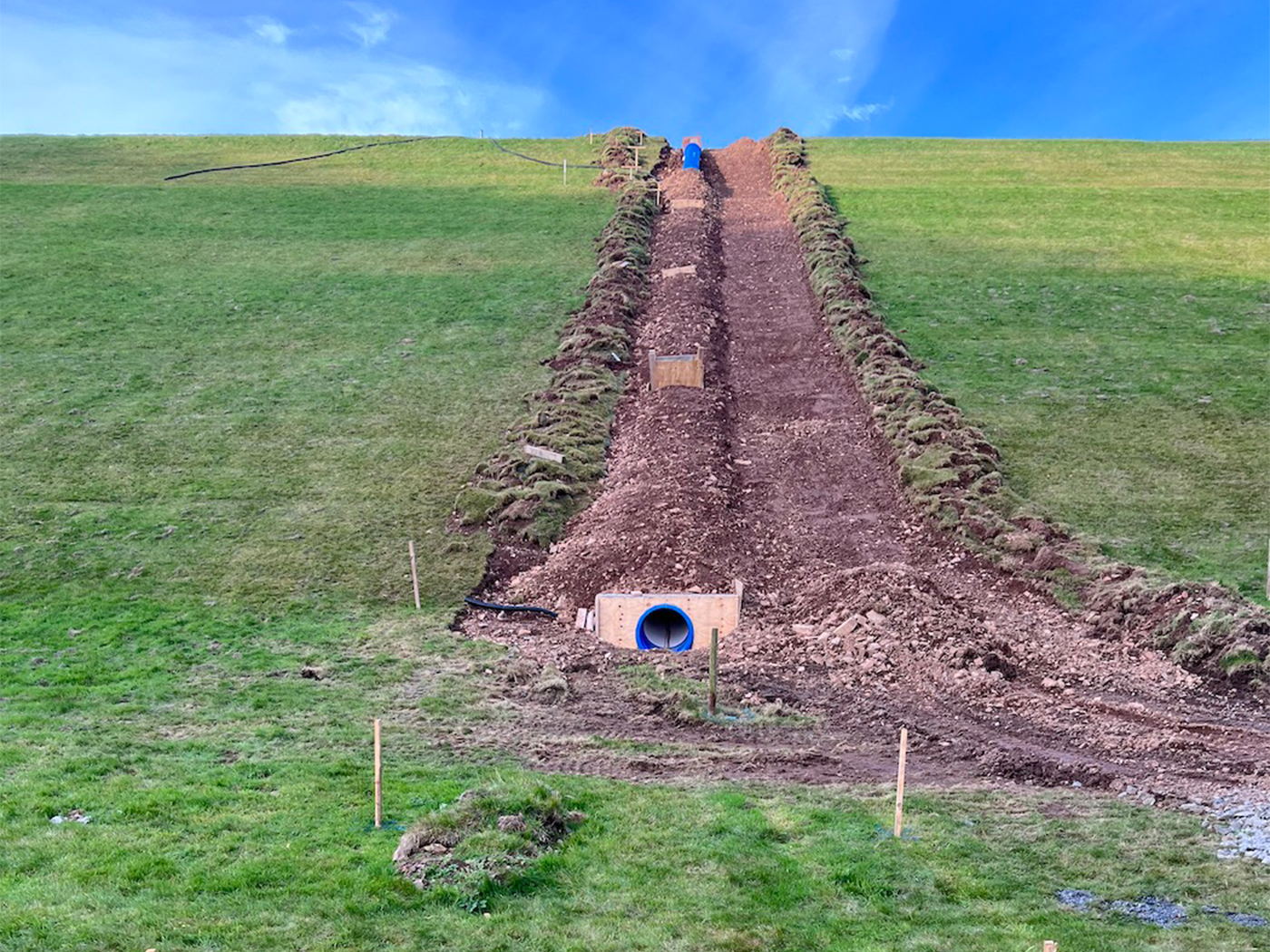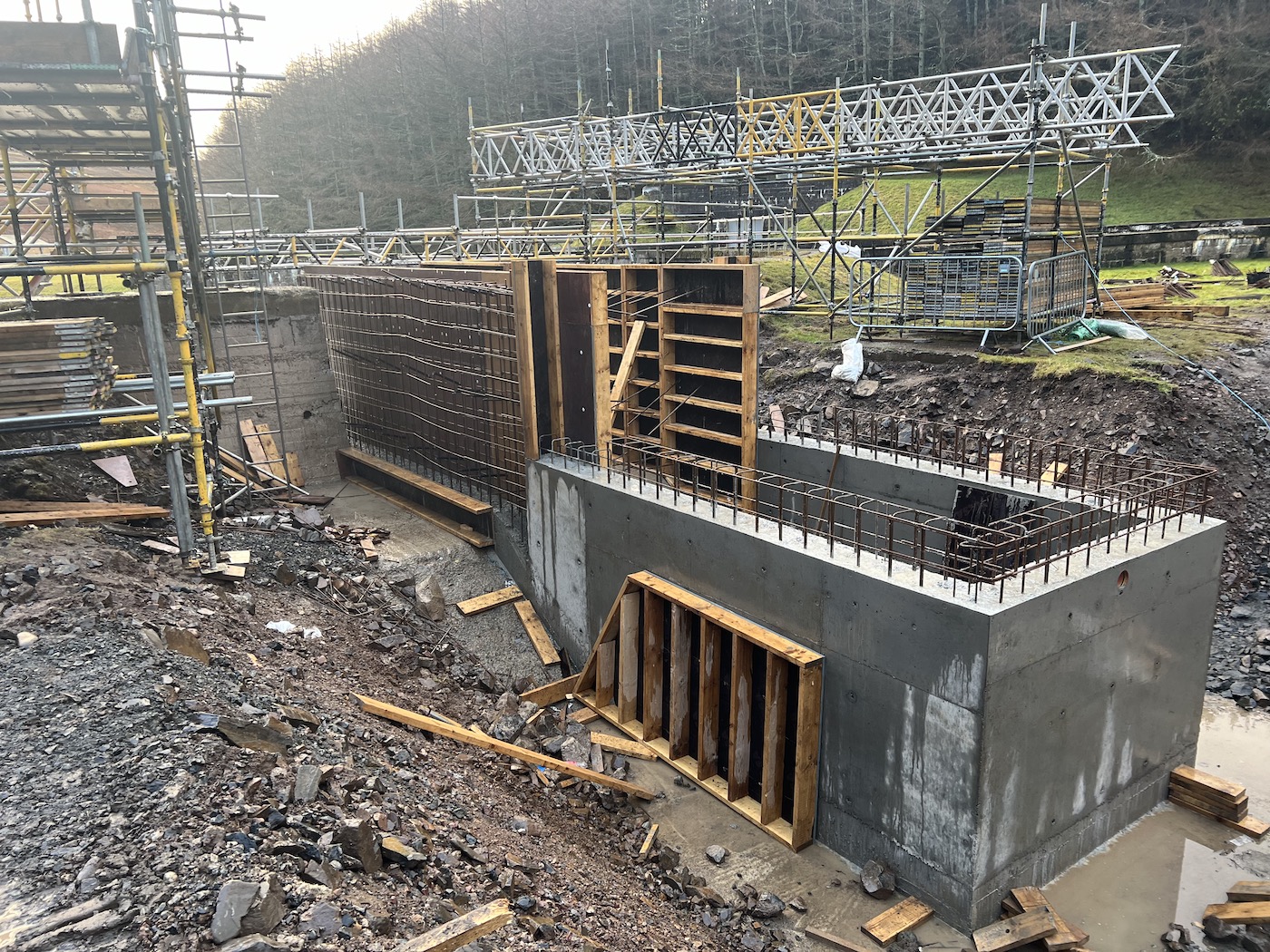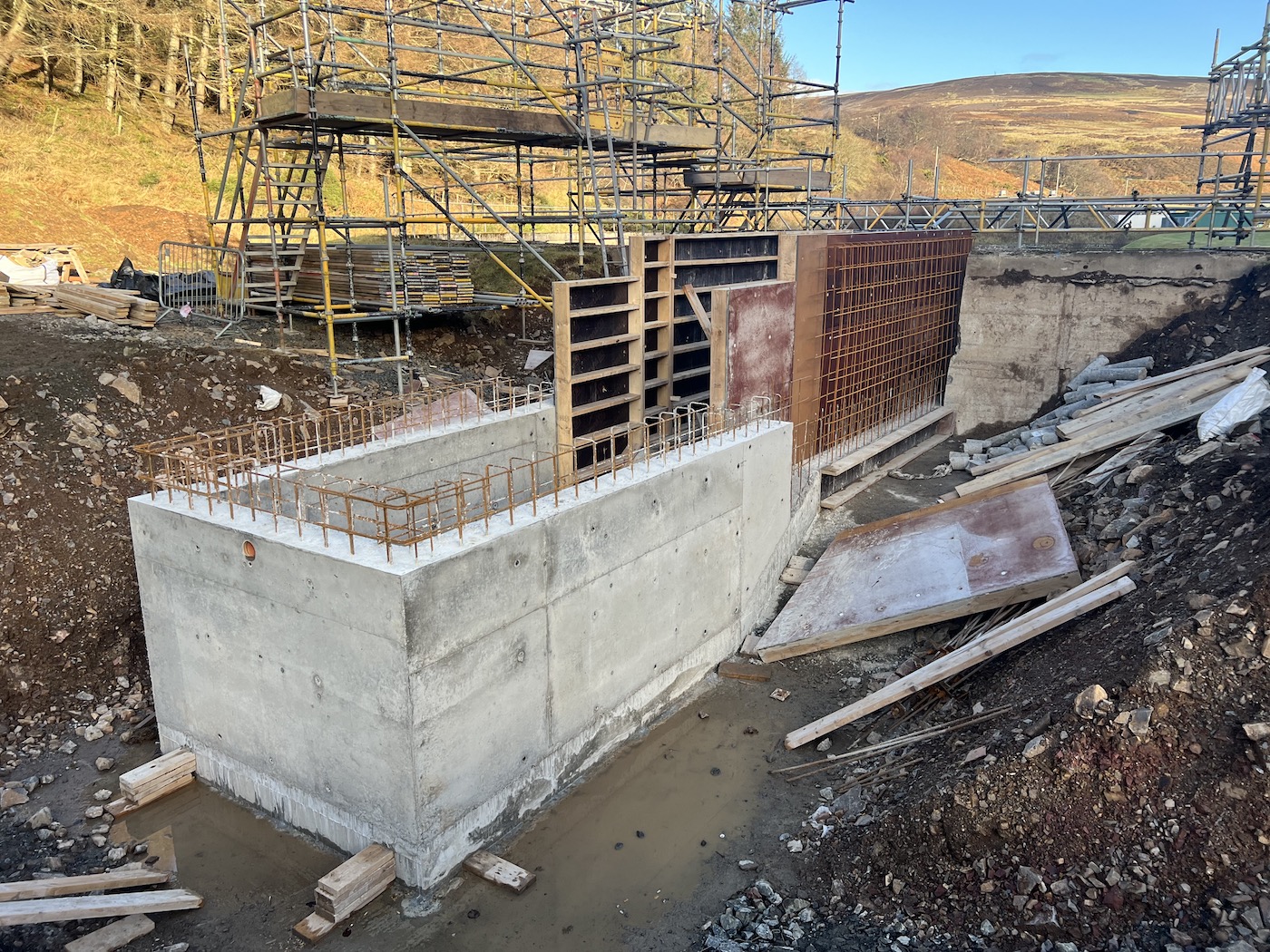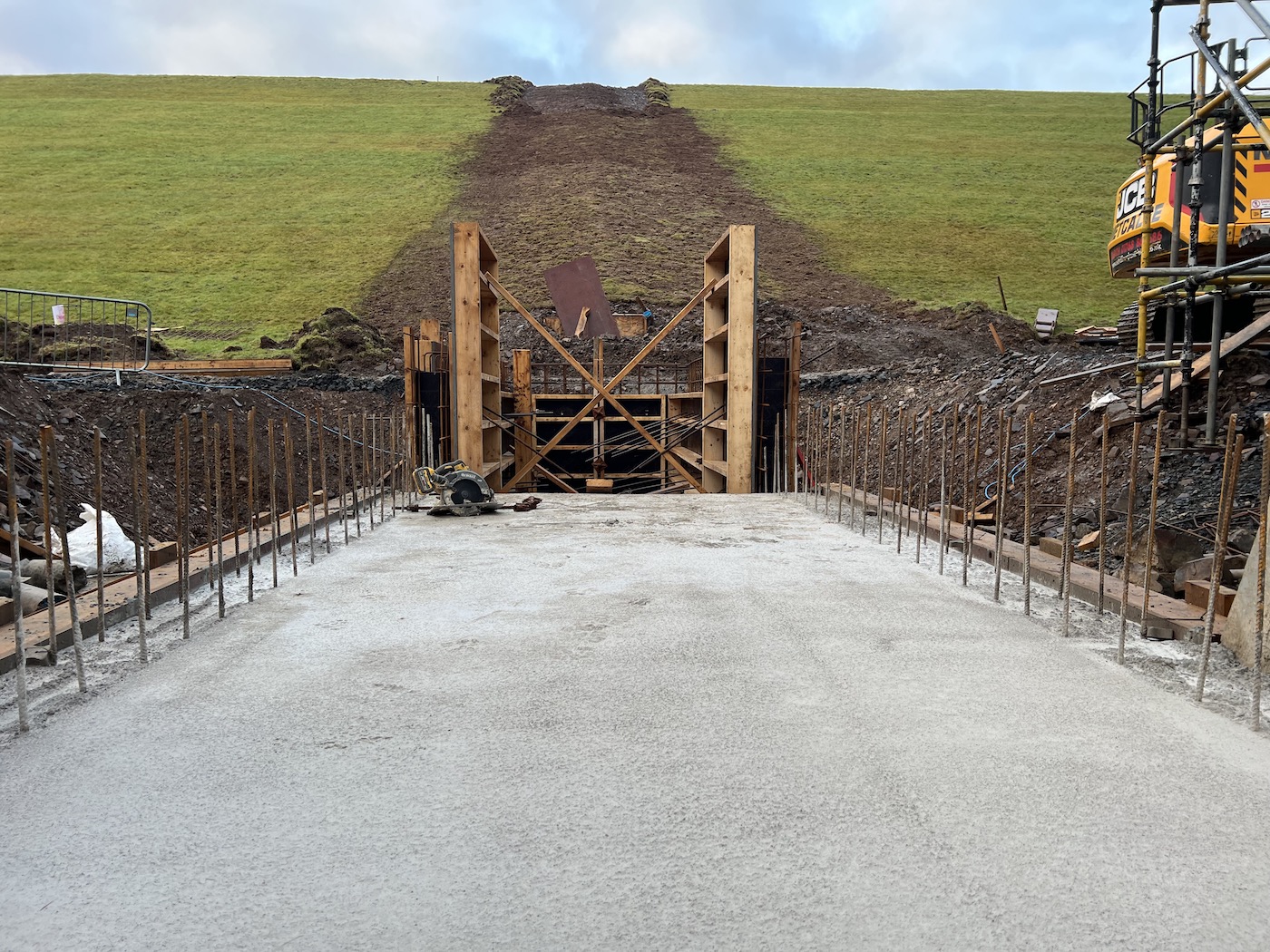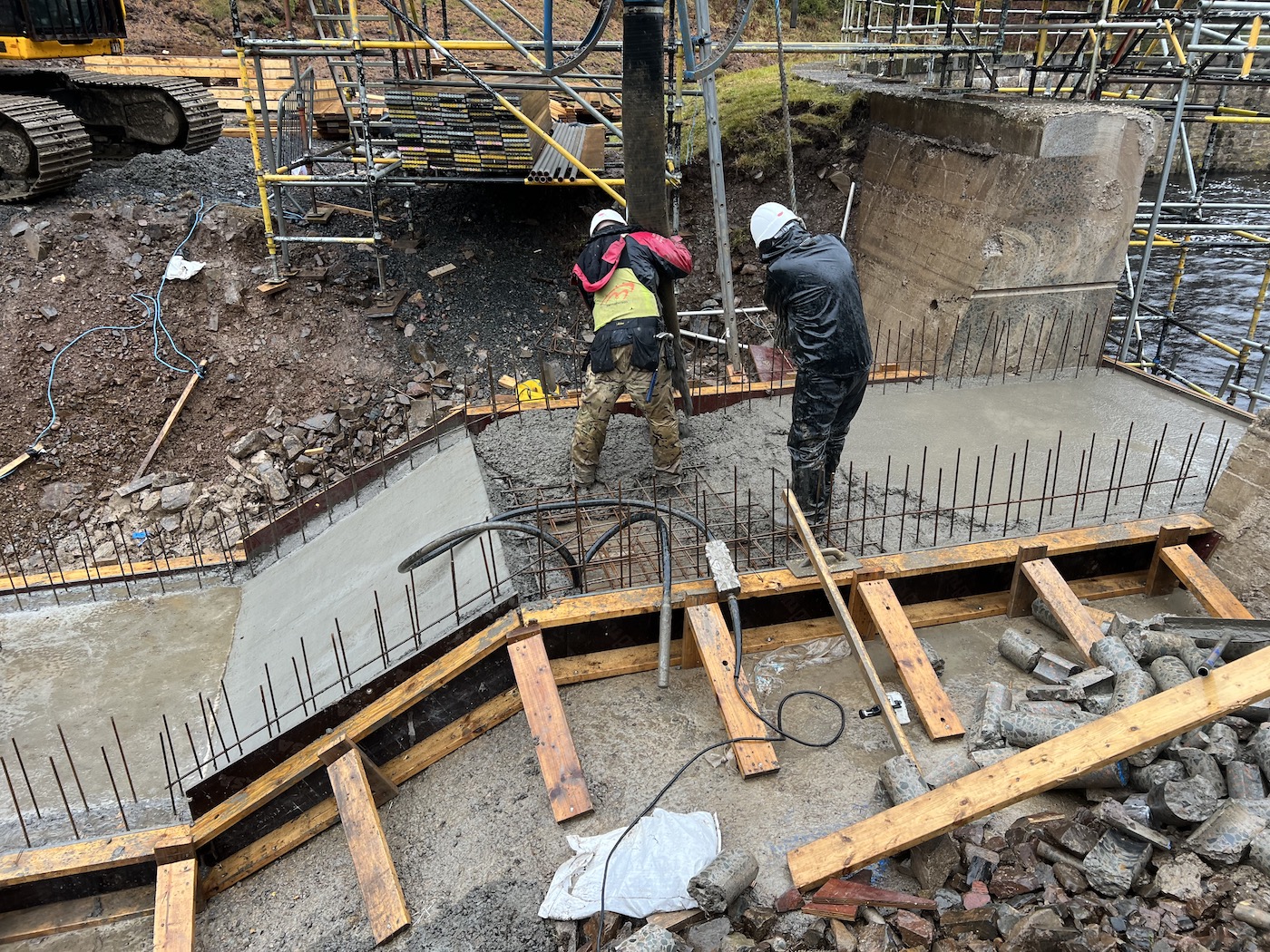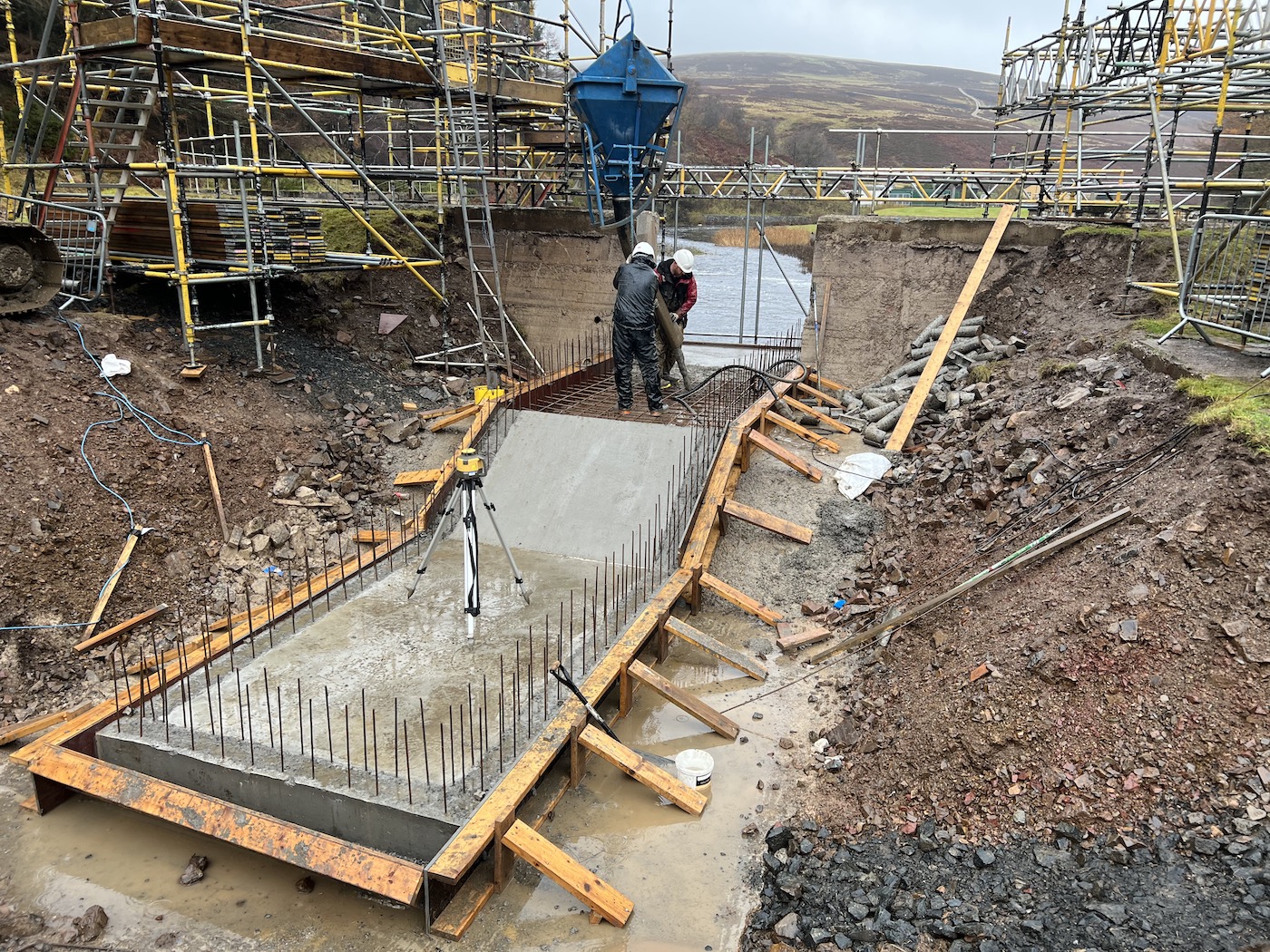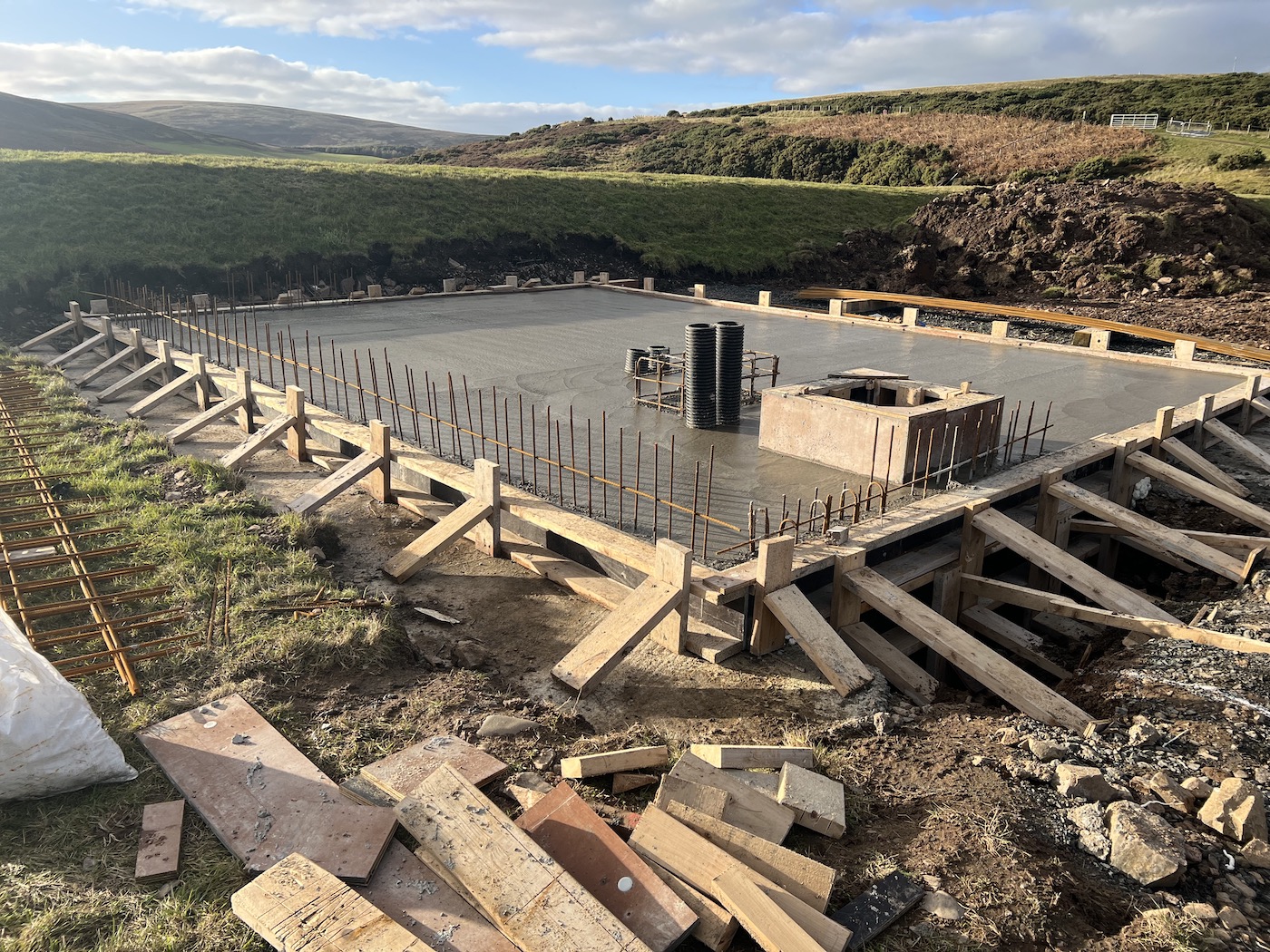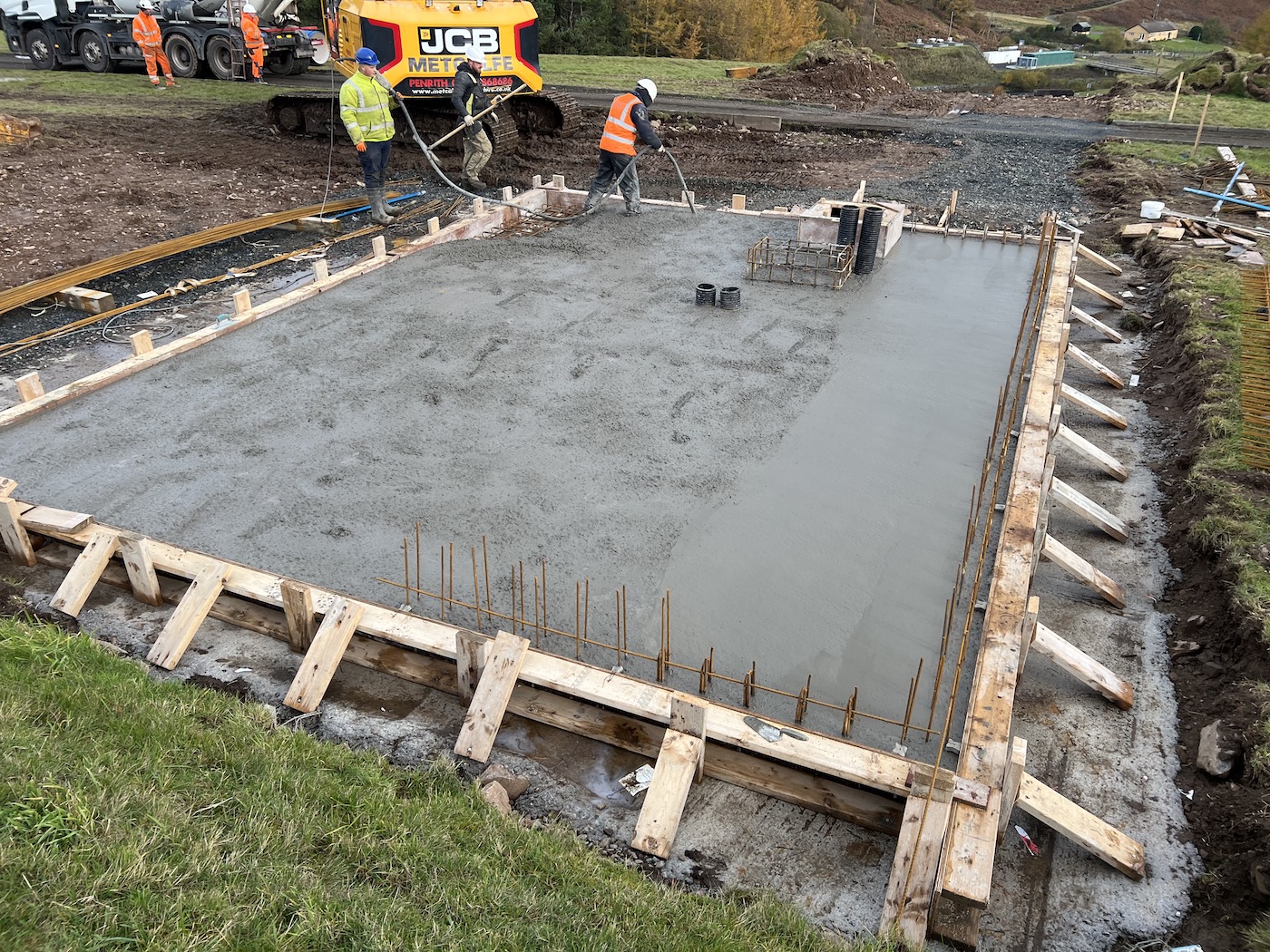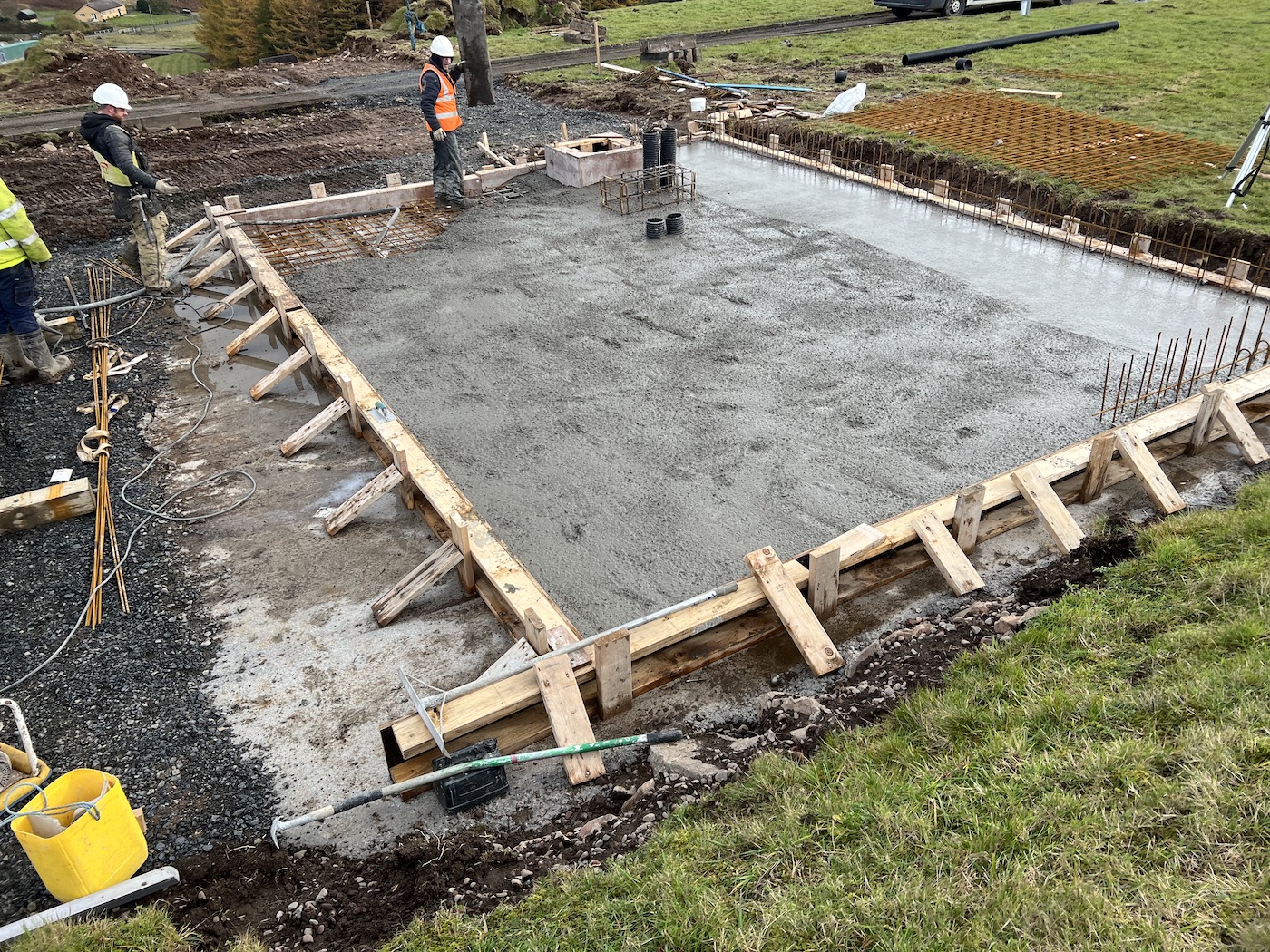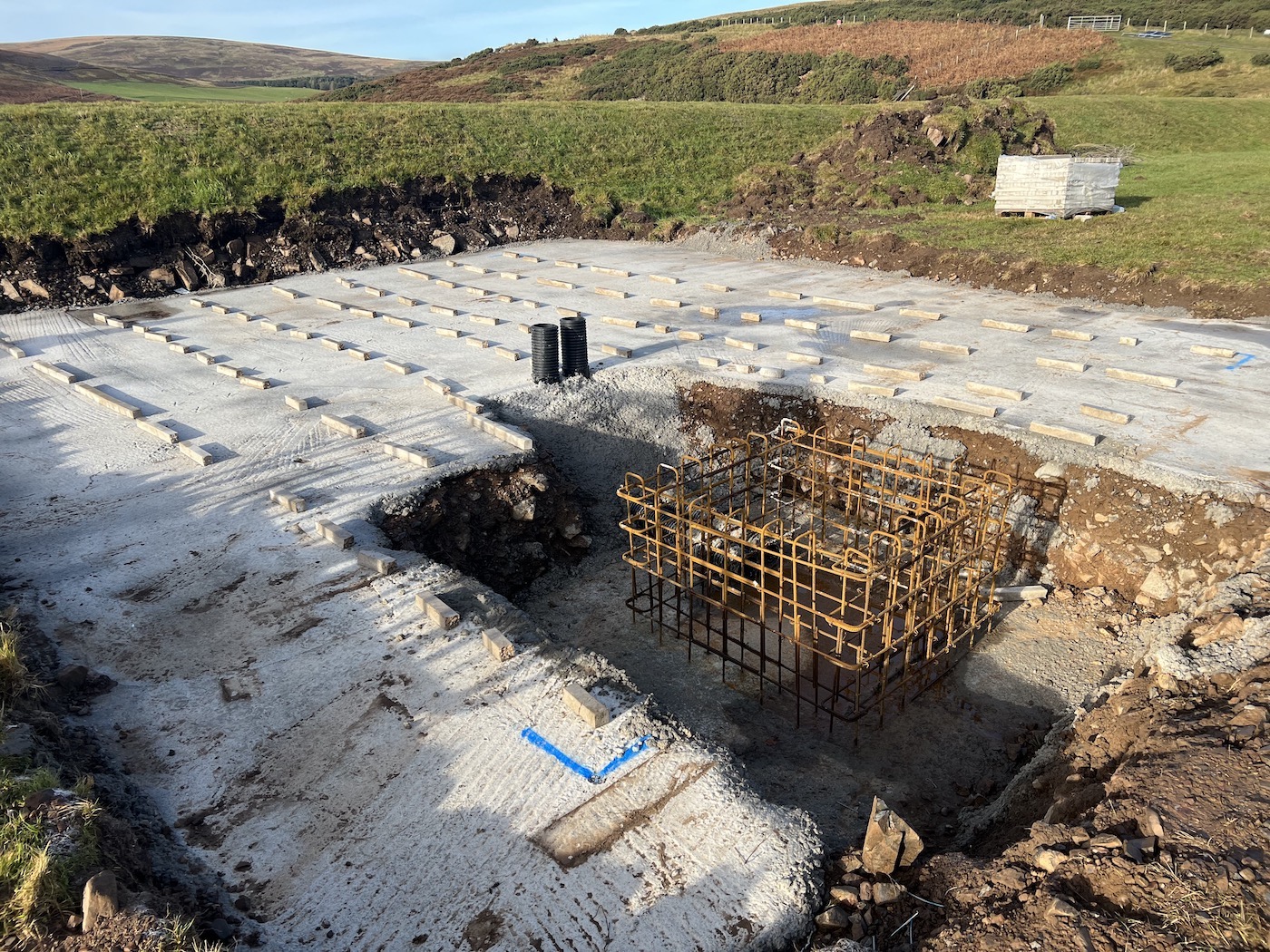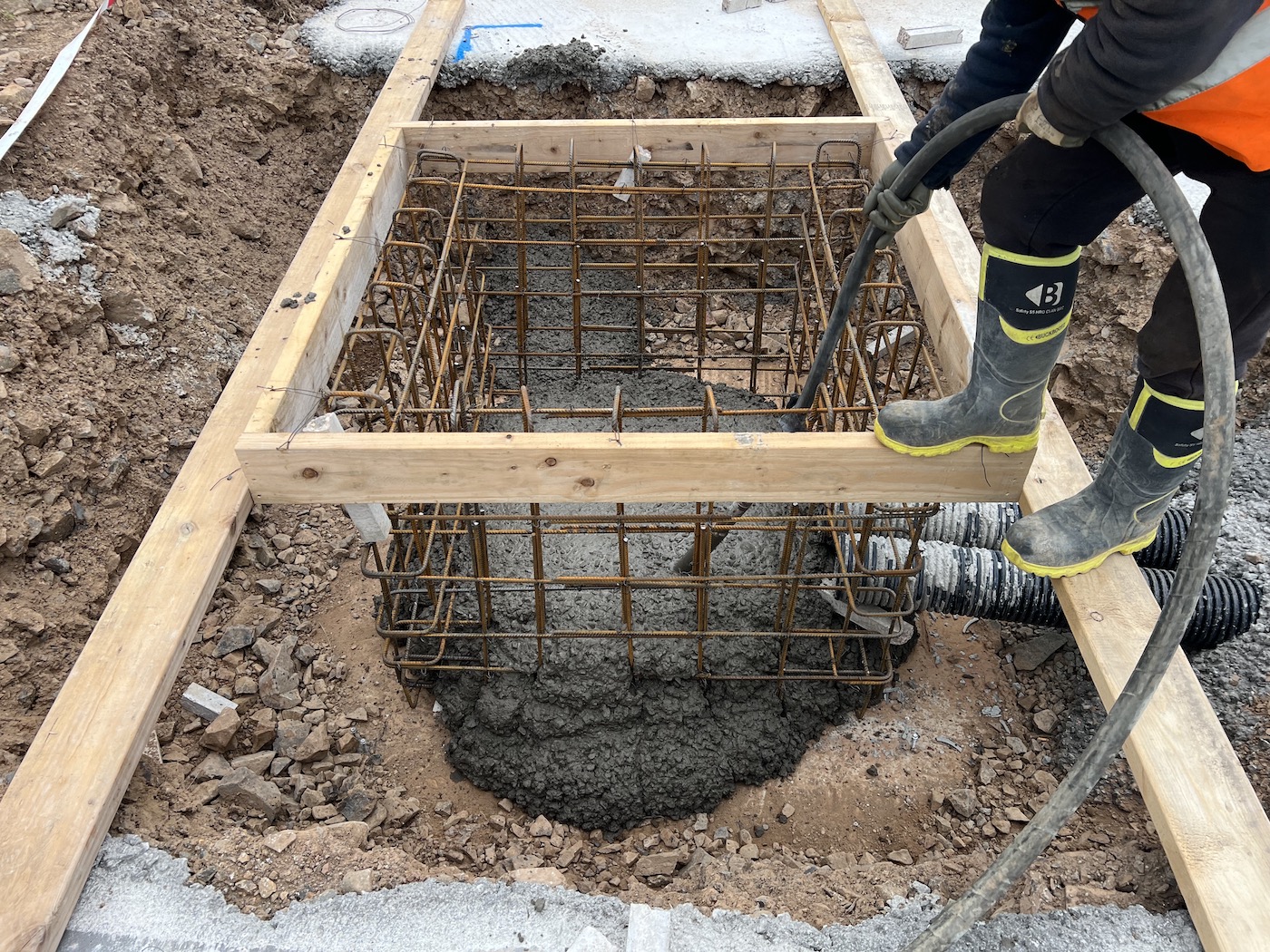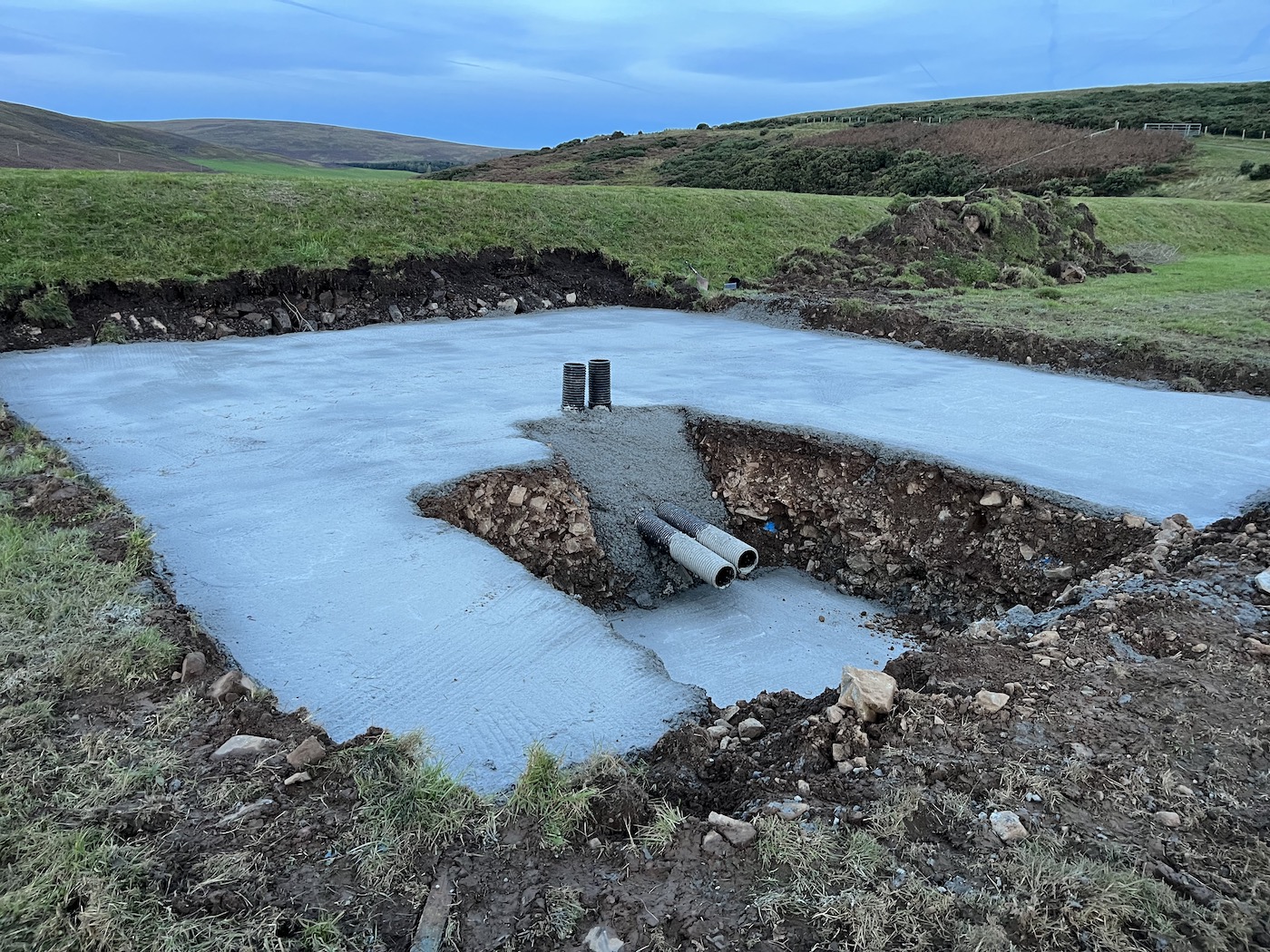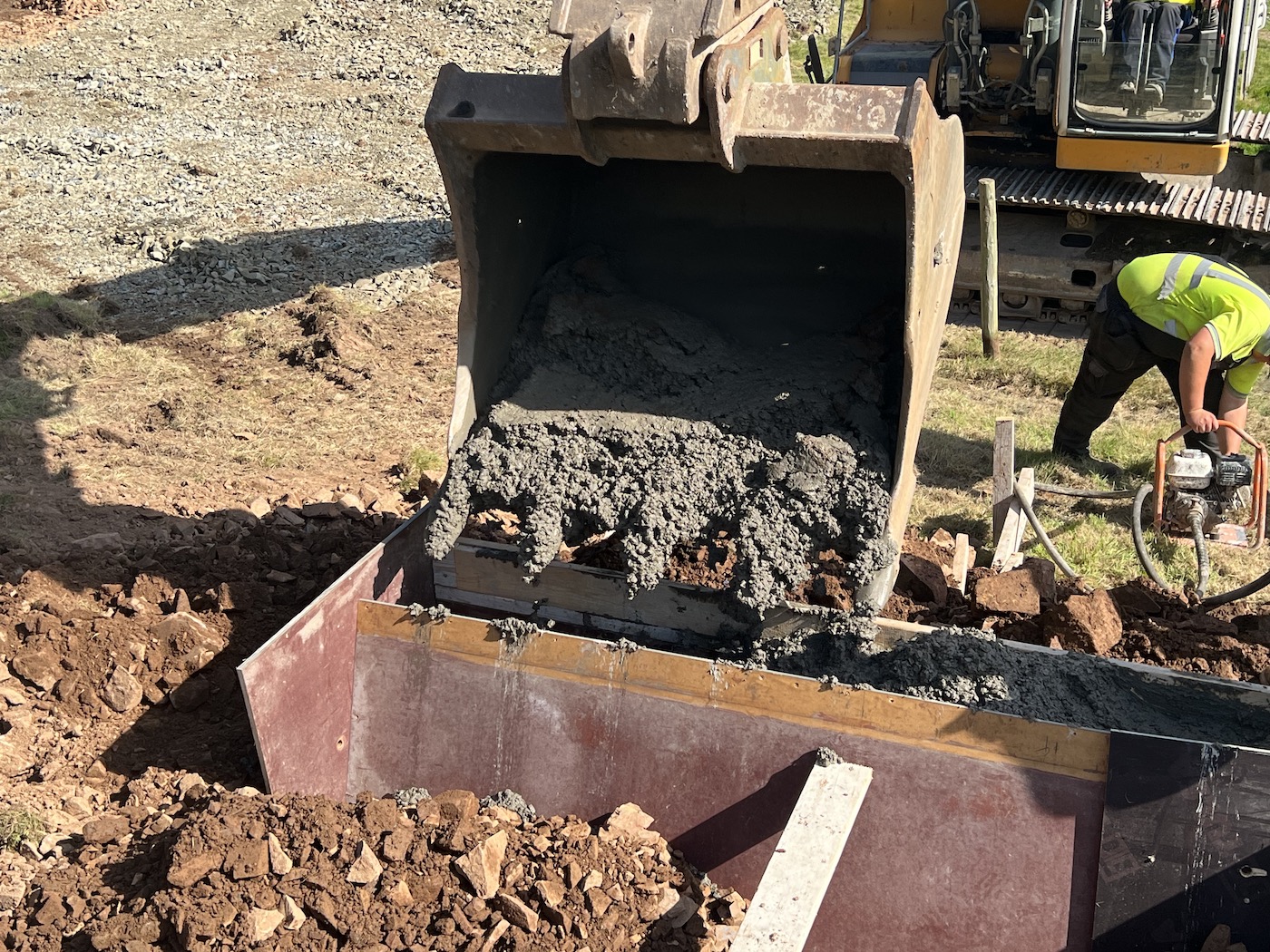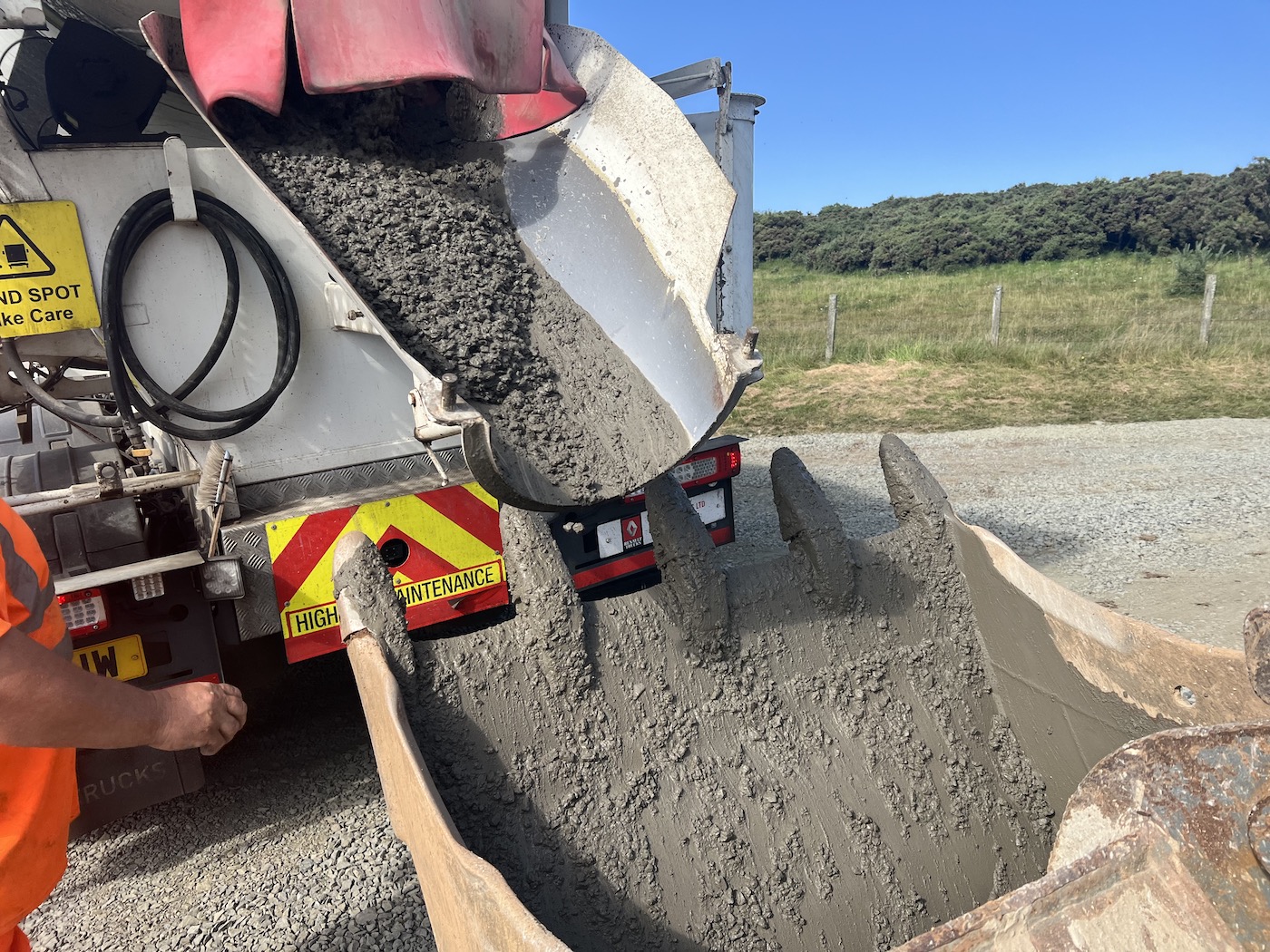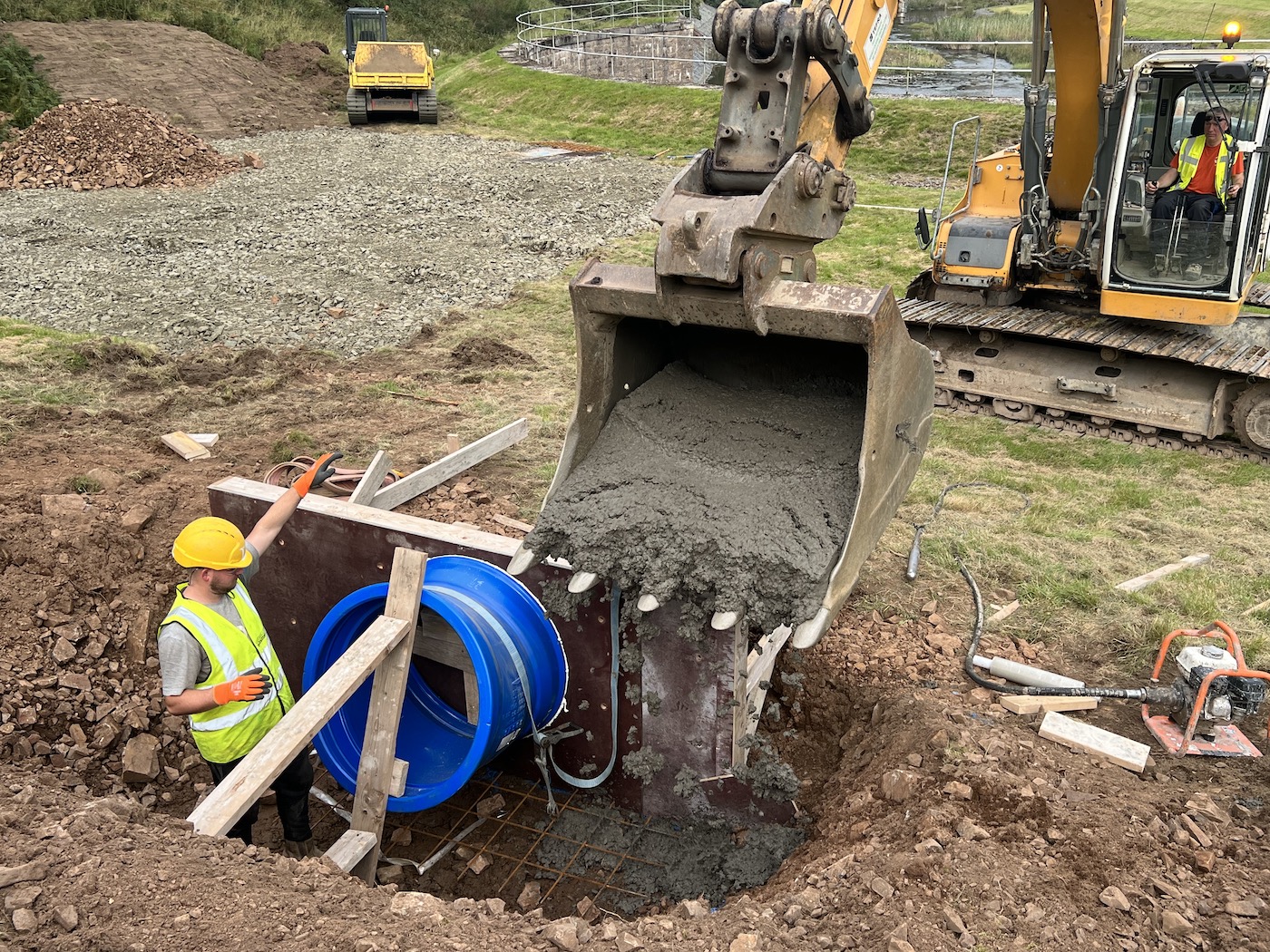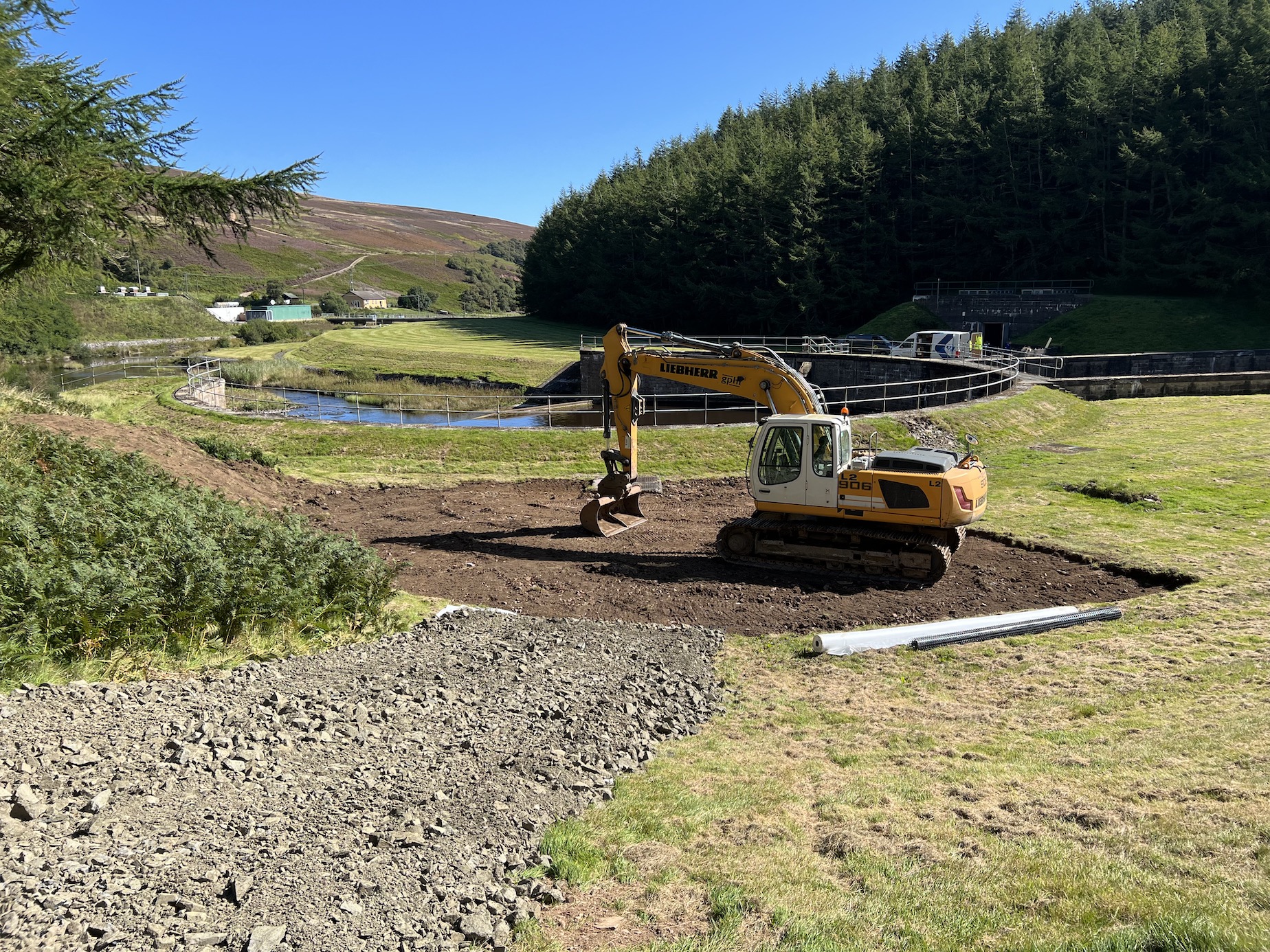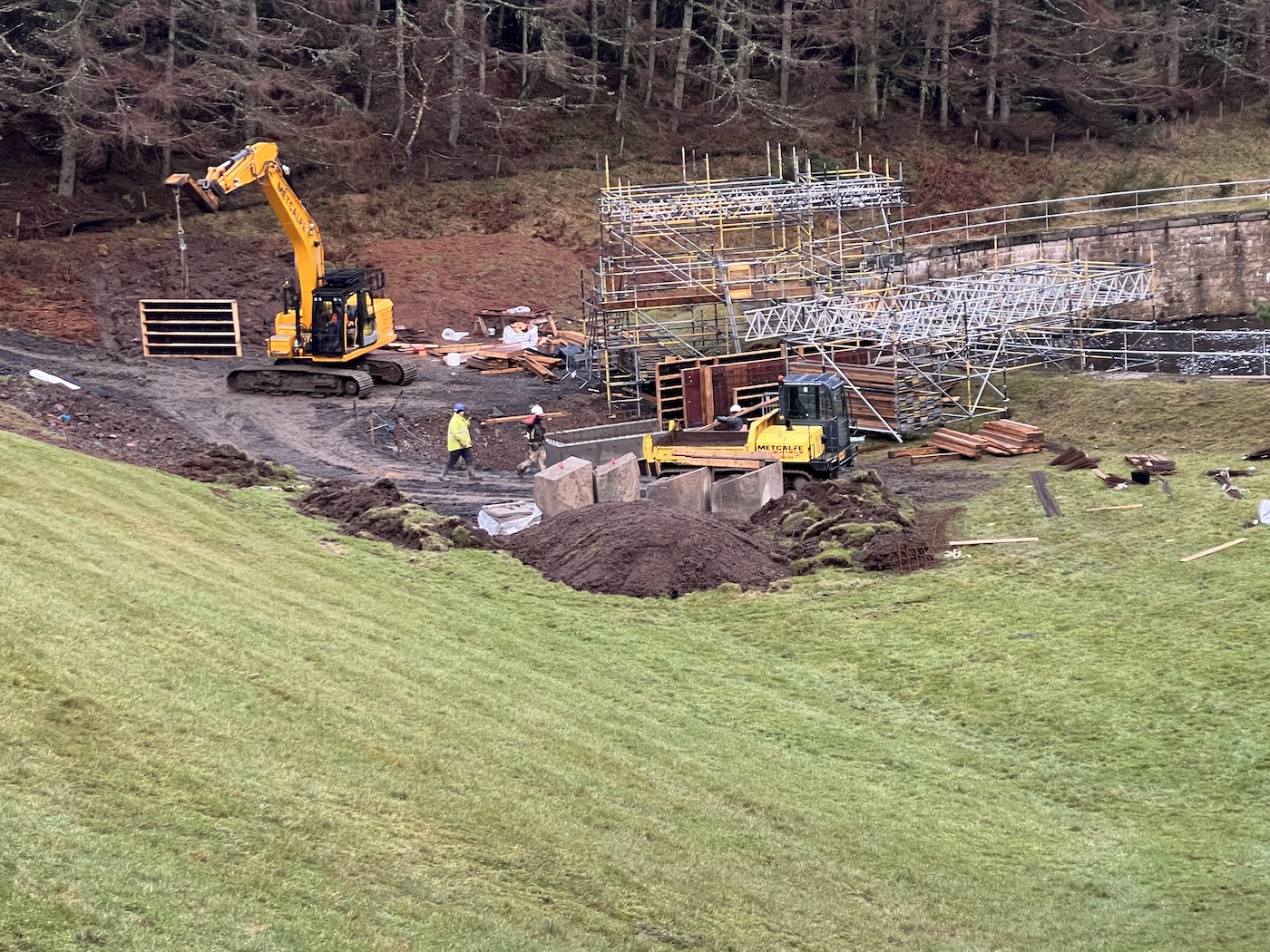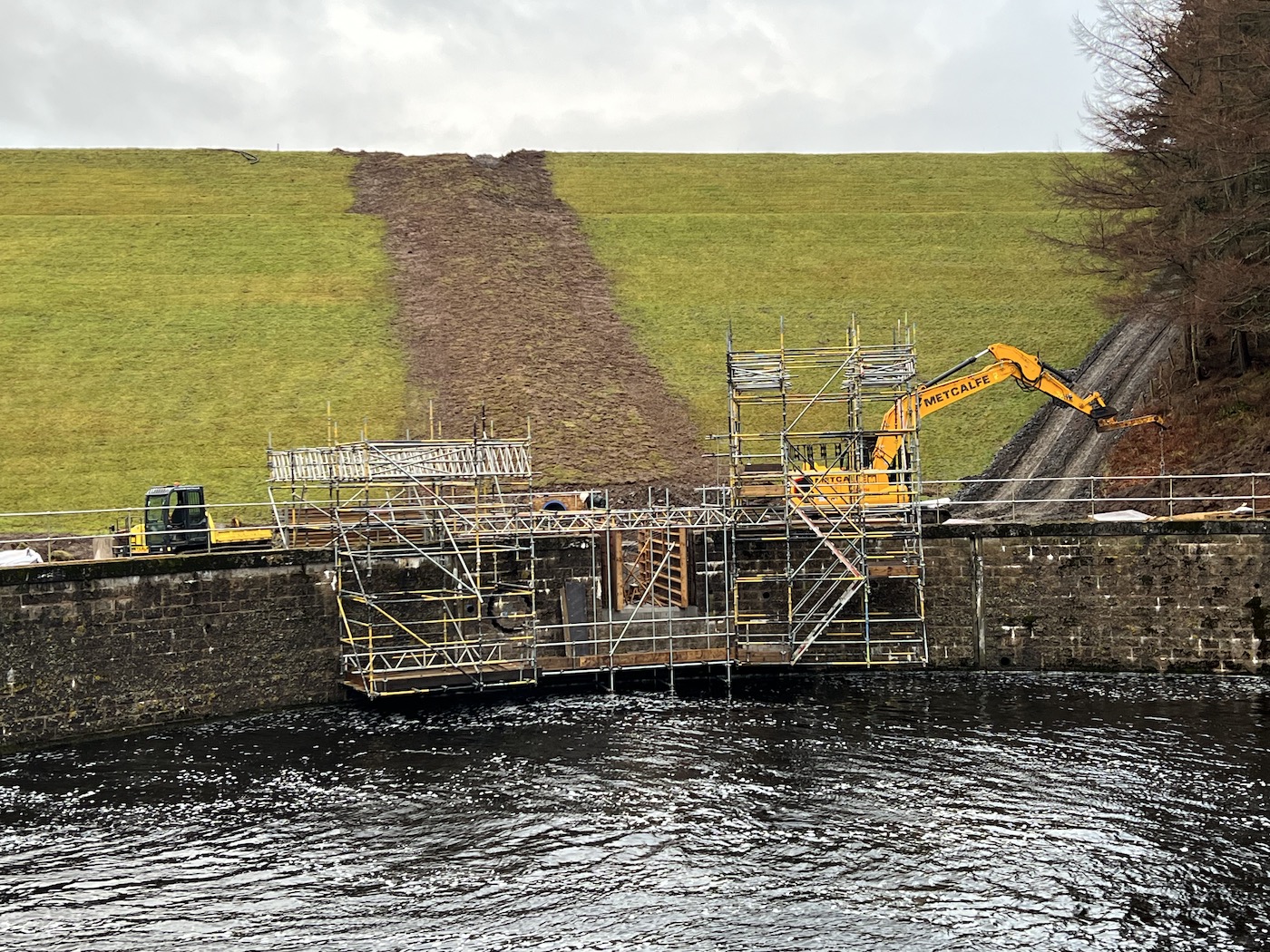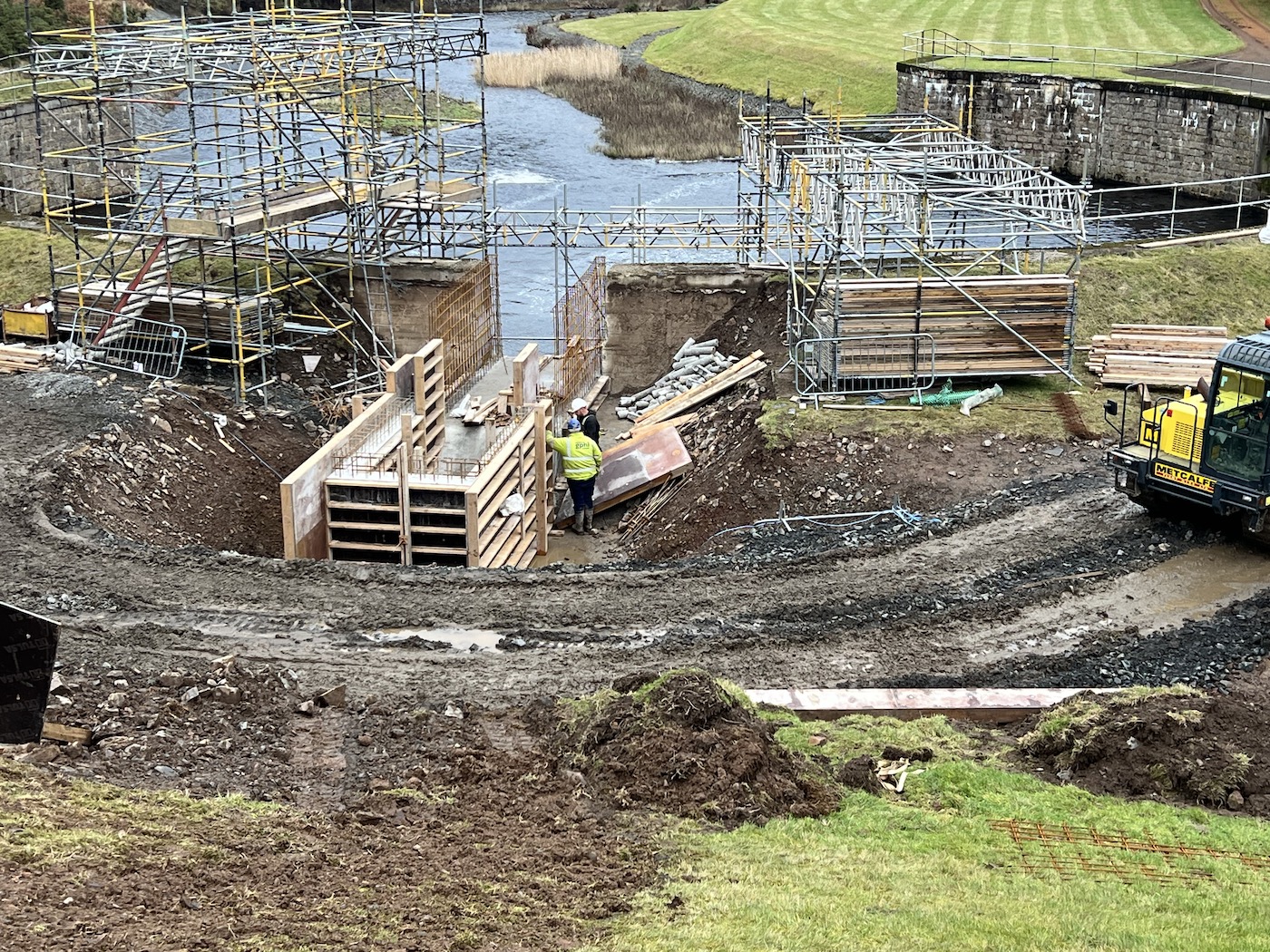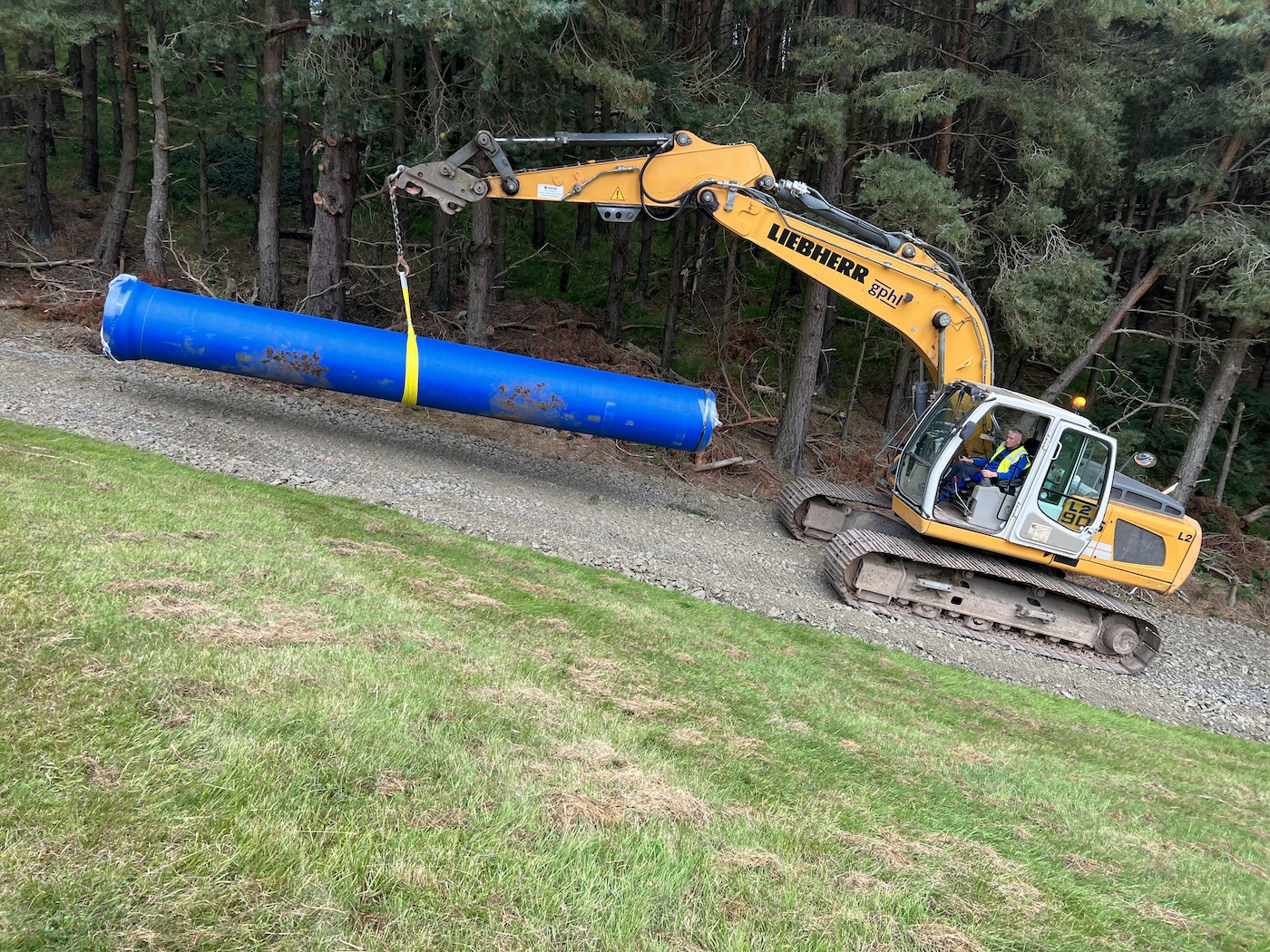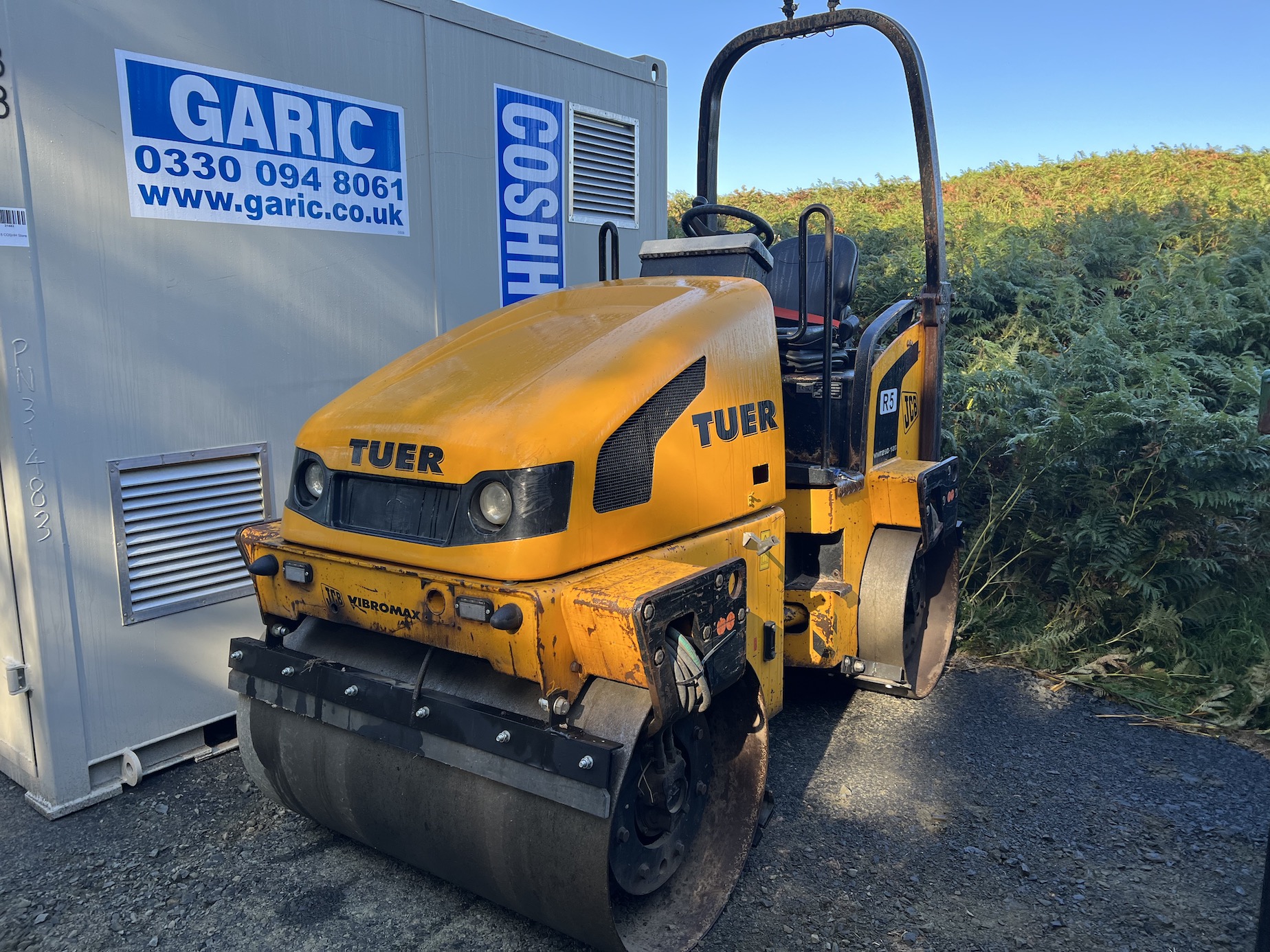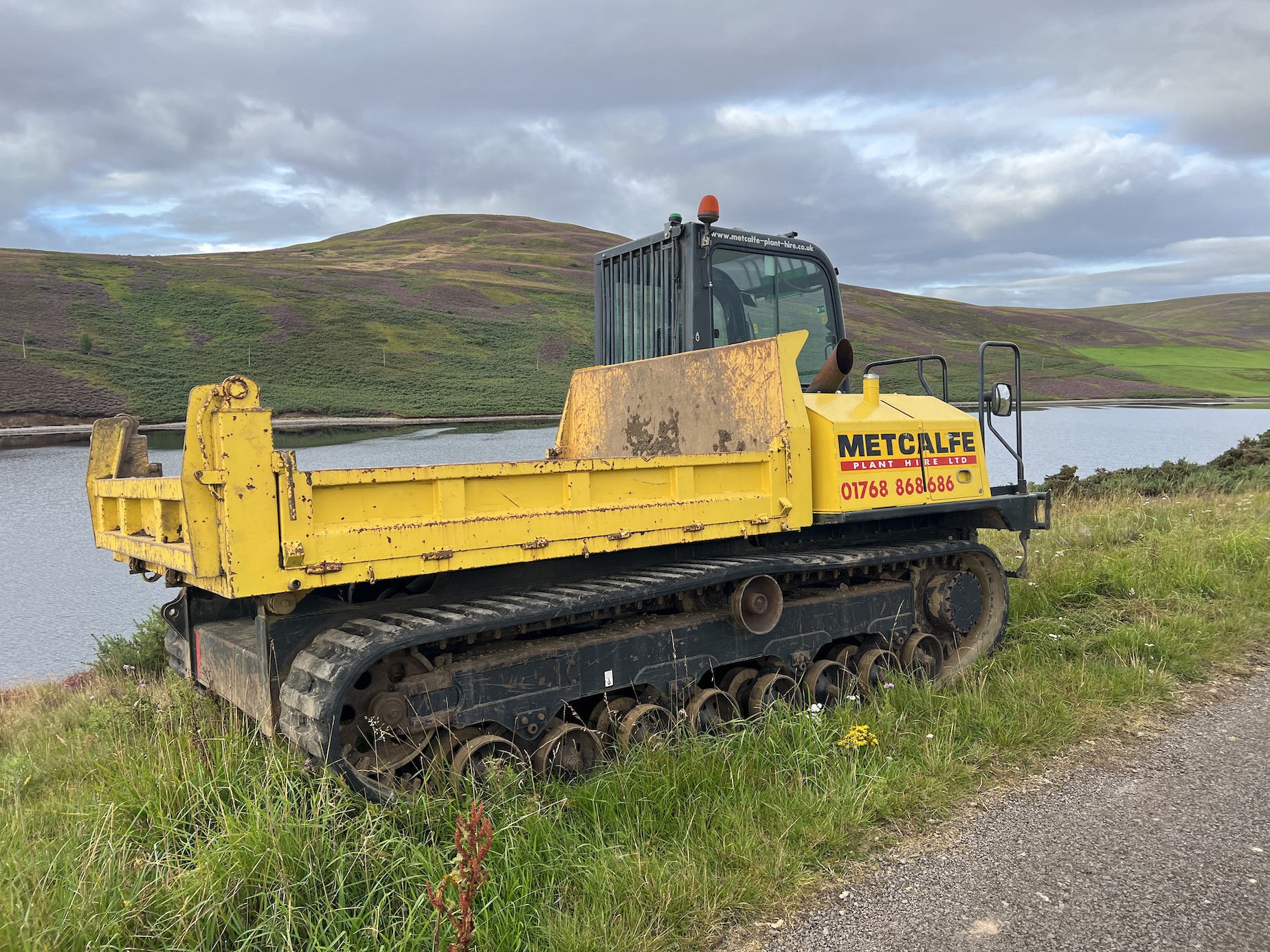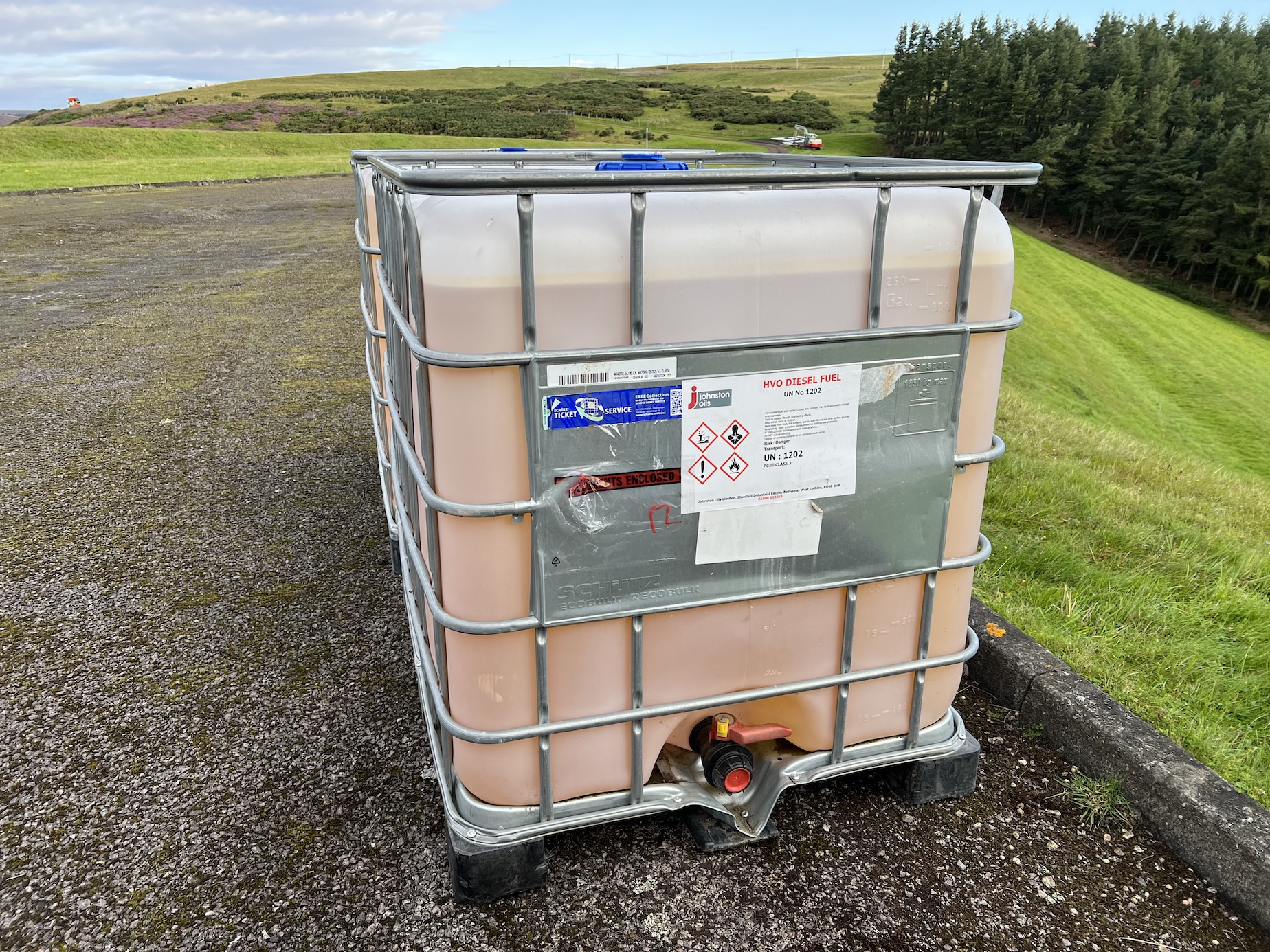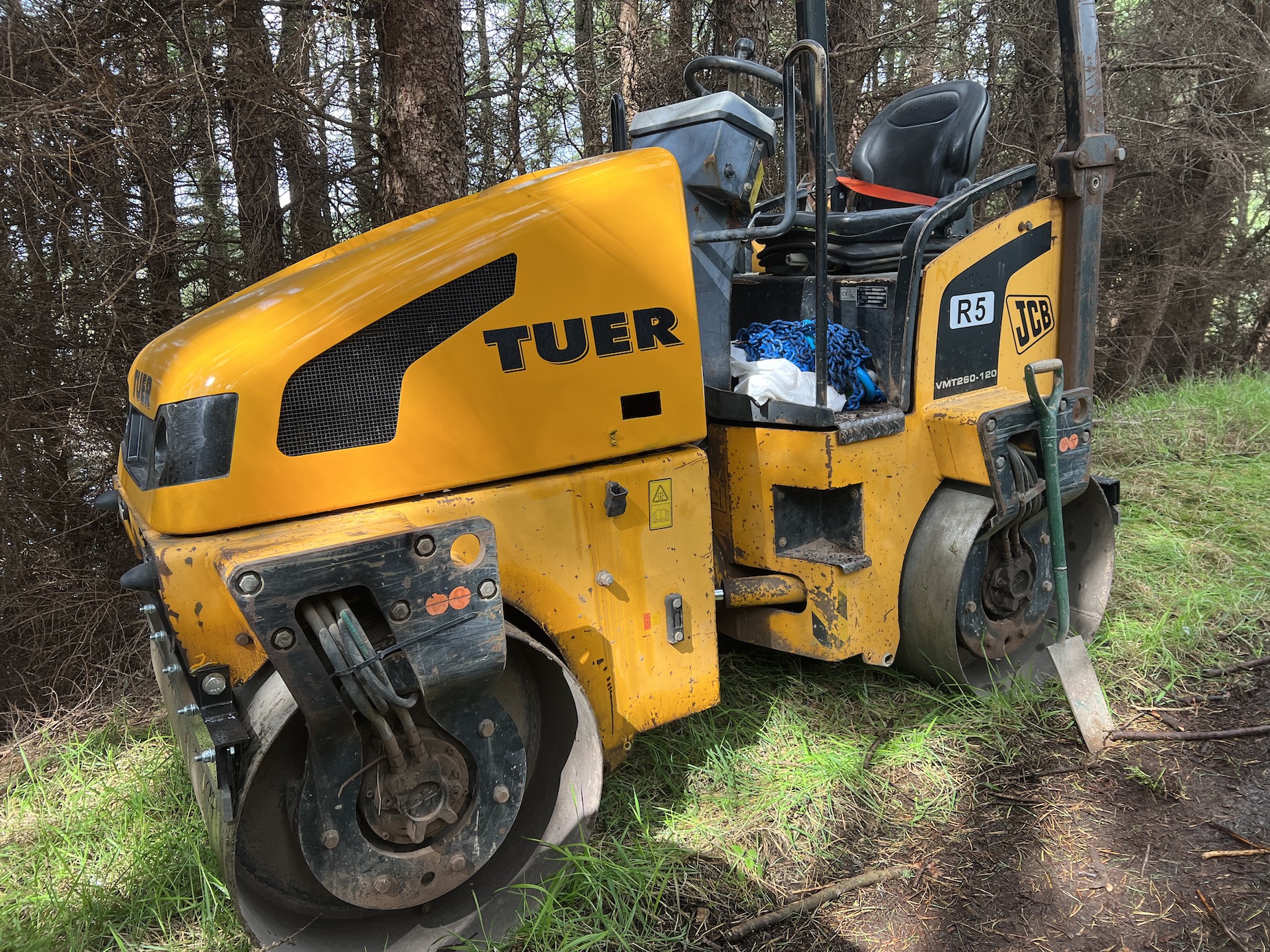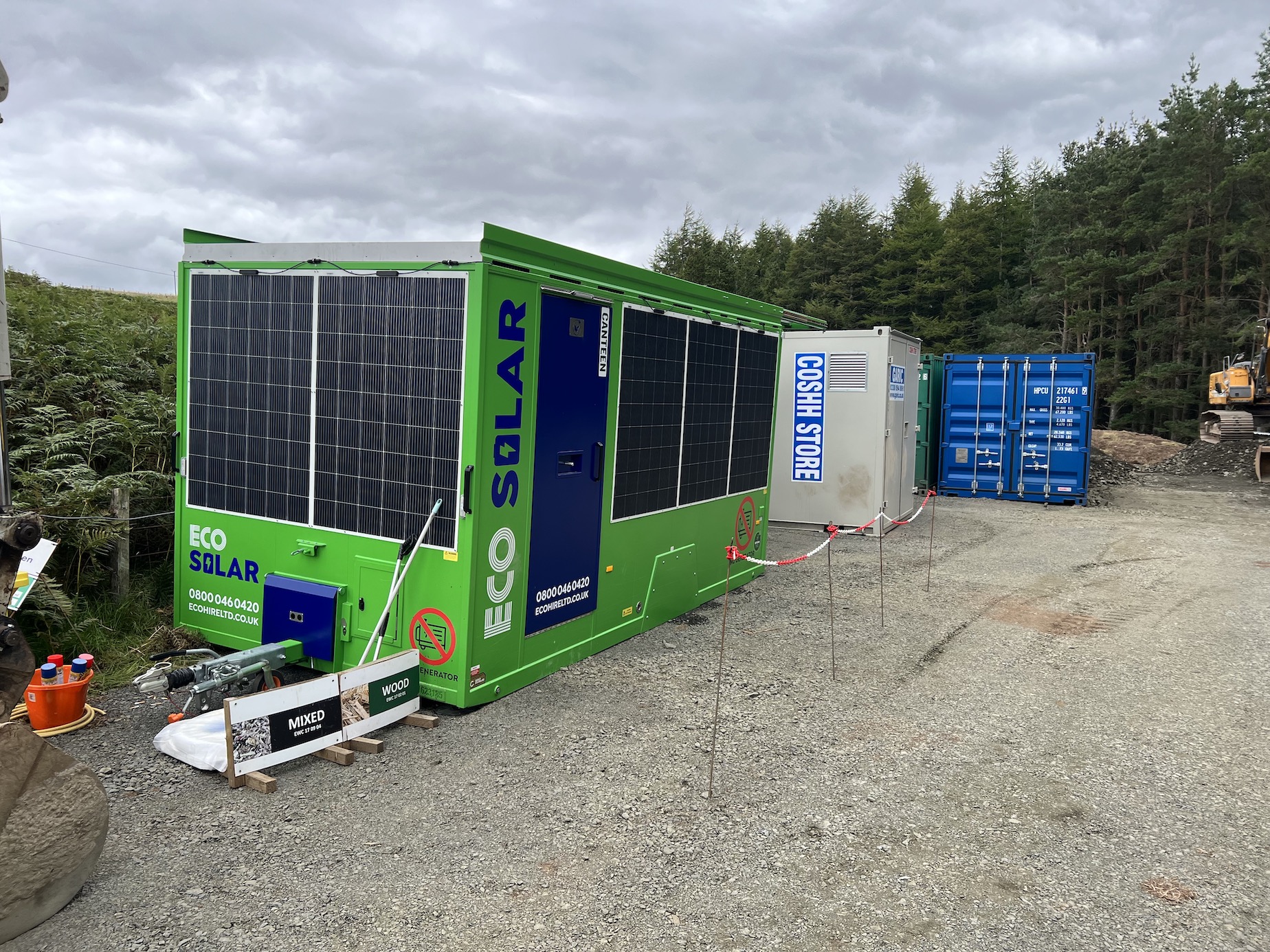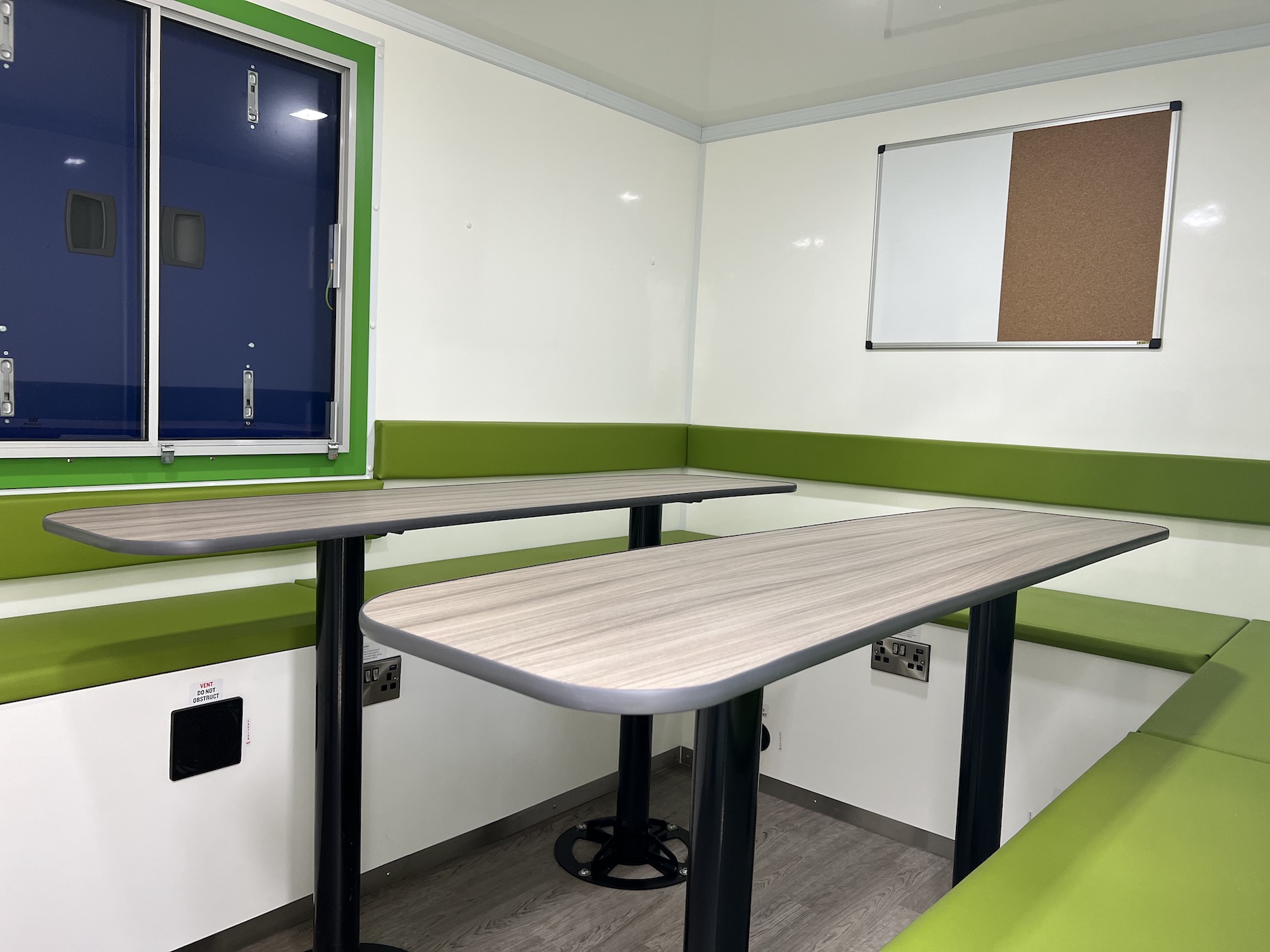Low-carbon construction at Whiteadder reservoir, East Lothian
Dulas was recently awarded a contract to install a new hydropower energy recovery system at Scottish Water’s Whiteadder Reservoir. The project involves tapping into the mains water from the reservoir and installing a turbine with a total installed capacity of up to 100 kW. Once completed, the output of the scheme will mean a significant reduction in on-site electricity use. Water treatment is an incredibly energy-intensive process – the International Water Association estimates that wastewater treatment plants consume between 1% and 3% of global energy output. To achieve net zero, water companies need to find ways to become more energy efficient, use lower carbon energy products and invest in renewable power technologies.
Whilst delivering a scheme that will help to limit carbon emissions well into the future, Dulas committed to making the build itself as low-carbon as possible. Traditionally, construction projects have created a high level of carbon emissions, both in terms of materials and running vehicles and associated infrastructure on site.
However, these days, anyone embarking on a construction project is faced with significant choices on constructing in a low carbon way, and we were keen to demonstrate that these choices needn’t be as troublesome as some might think.

01: We used low-carbon concrete throughout the build
Although concrete is a versatile and durable building material, it is no secret that it has a significant environmental impact. This is mainly due to the energy-intensive manufacturing process of cement, a key ingredient in concrete. It’s estimated that cement production is responsible for approximately 8% of global CO2 emissions – if the cement industry were a country, it would be the third-largest emitter of carbon dioxide in the world, after the U.S. and China.
Low-carbon concrete uses alternative binders that can replace a proportion of the cement in concrete, resulting in lower CO2 emissions during production. Additionally, the incorporation of recycled materials, like crushed concrete or industrial by-products, further reduces environmental impact. On this site, approximately 50m3 of concrete was required.
02: We used biofuel instead of fossil fuels
Every construction site uses heavy vehicles like excavators and cranes, and they often have generators on site to provide power for essential project infrastructure, all normally fuelled by diesel. We estimate that this project will have used between 10,000 and 15,000 litres of fuel by the time of its completion, but we have dramatically reduced the associated carbon footprint by opting for biofuel. More specifically, hydrotreated vegetable oil (HVO), instead of traditional diesel. HVO is a second-generation biofuel, which means, unlike conventional diesel, it comes from a non-food bio-feedstock which doesn’t compete with the food chain. Because of the chemical makeup of HVO, the fuel is similar to conventional diesel, meaning it can be substituted for conventional diesel with little or no modification needed to the engines, it can be used to power heavy vehicles and generators. At the Whiteadder site, 20T mechanical excavators, tracked dumping machines and a steam roller all used Shell HVO biofuel throughout the project.
How is HVO produced?
HVO is produced by hydrotreating vegetable oils and fats – renewable materials which can be sustainably regrown when needed. To obtain HVO fuel from biomass, the biomass is gasified in a process called ‘pyrolysis’ where synthetic gas is created. The gas is then converted to liquid using a Fischer-Tropsch-like method. Biomass-to-liquid contains very few sulphur particles and aromatics, so they cannot be released during combustion in the engine. This lowers the fine particulate emissions. The cost of HVO compared to traditional diesel is around 30% higher, but it costs the planet far less, and it does exactly the same job. There is also no harmful smoke on start-up, improving air quality for those working on site.
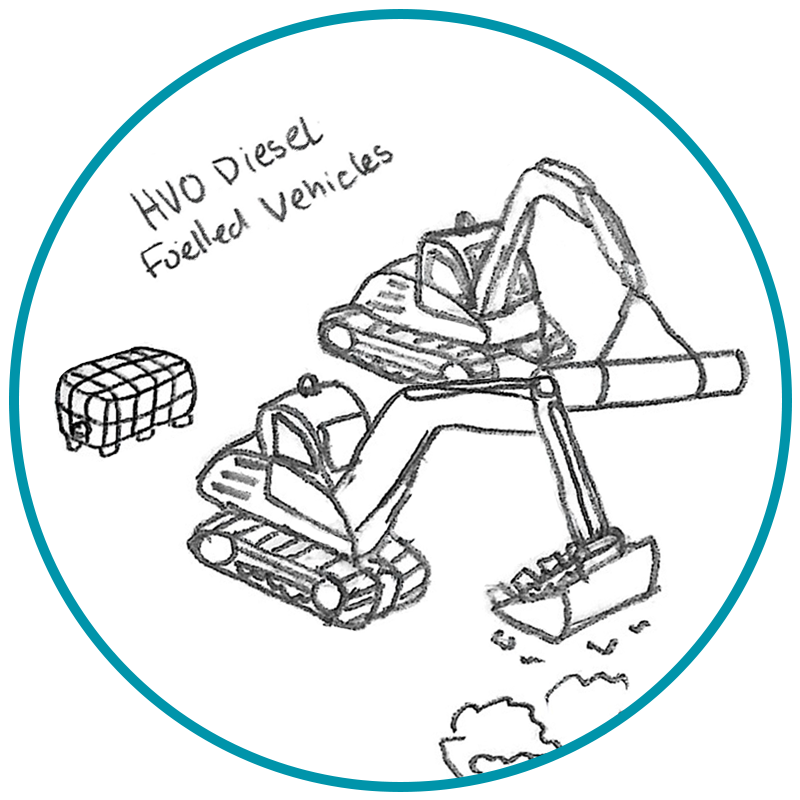
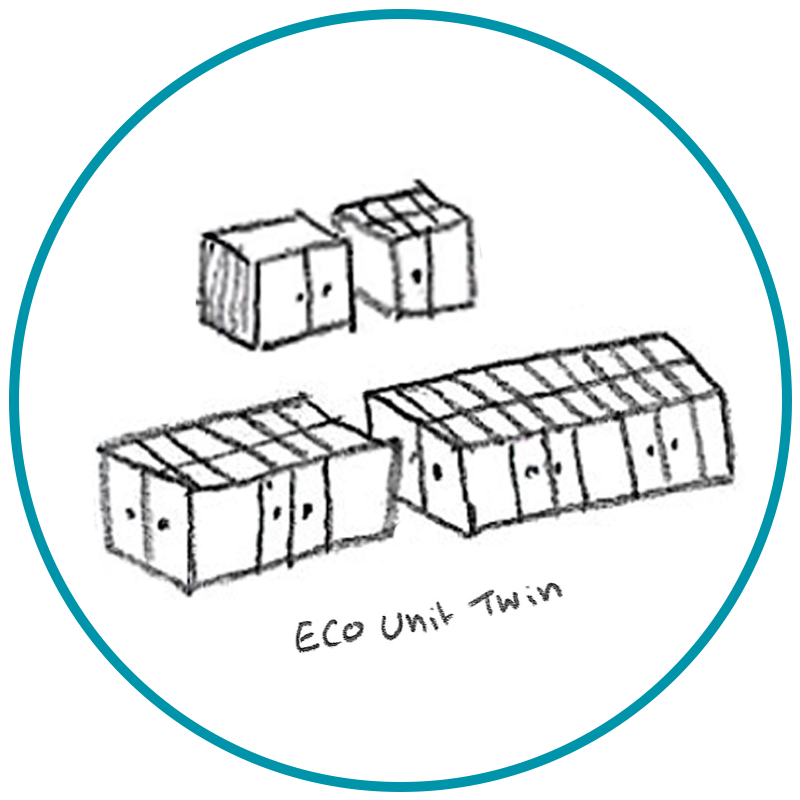
03: We used solar-powered welfare cabins, and went electric for on site charging
Dulas set up solar panels on site at the onset of the project which feed into energy storage systems. Energy stored can be used to supplement the solar-powered welfare cabins to provide facilities for those working on site. Despire being a remote site, this remote power solution was essential to facilitate reliable working, even in the cold and wet conditions. The Ecohire cabins are run almost entirely on solar power during summer and produce virtually zero harmful emissions. They also save water by rain-harvesting and recycling grey water. On top of that, they provide first-class site welfare facilities with no drop in performance or quality. Dulas engineers are no strangers to remote environments with few facilities, but everyone needs somewhere to make a brew and catch up on emails!
All electric hand-held tools were reliably charged up using solar power, backed up by an HVO-fuelled generator. Solar-generated electricity was stored in a large 10kWh lithium-ion battery, meaning that the construction team would arrive each morning at the eco charging station to collect their fully-charged tools ready for a full day’s work. The cabin included 40 individual lockers and multiple 230V plug sockets and USB chargers, too.
A win across all fronts
Dulas will be presenting Scottish Water with an emissions report at the end of the build, confirming that it has gone and above and beyond the terms of the contract, demonstrating how accessible a low-carbon build can be. Ultimately, the finished project will help to limit the costs of delivering services to customers, and help Scottish Water meet its overall global target for reduced carbon emissions – it’s a win-win all round.

Donald Speirs
Business Development Manager
For further information, feel free to get in touch.
Email: info@dulas.org.uk
Renewables Tel: 01654 705 000



